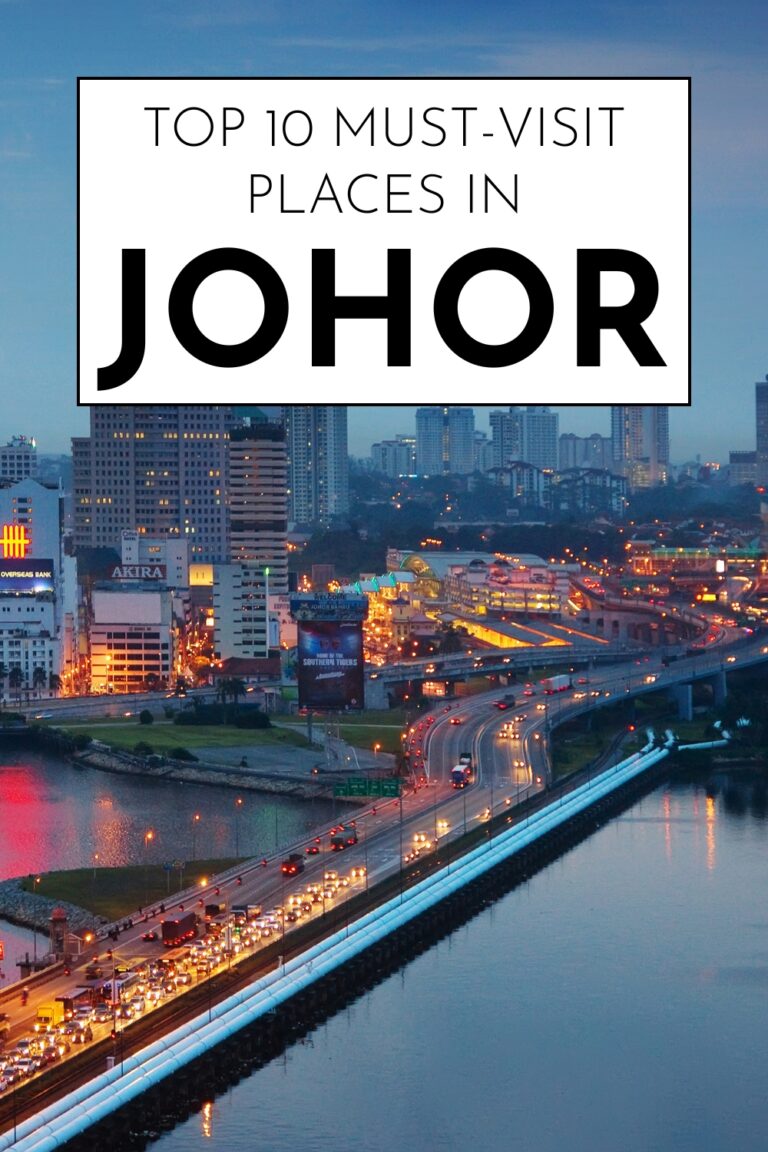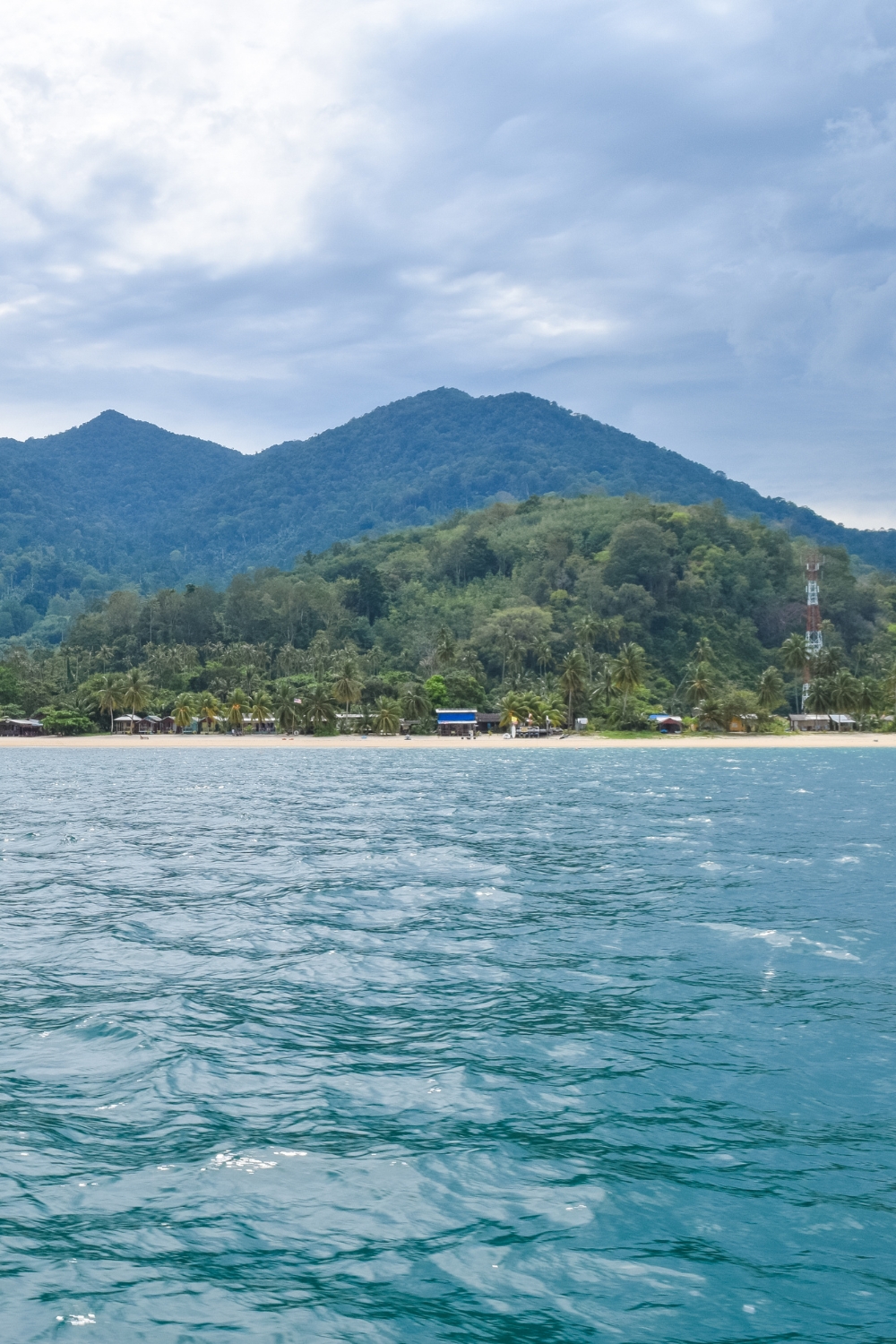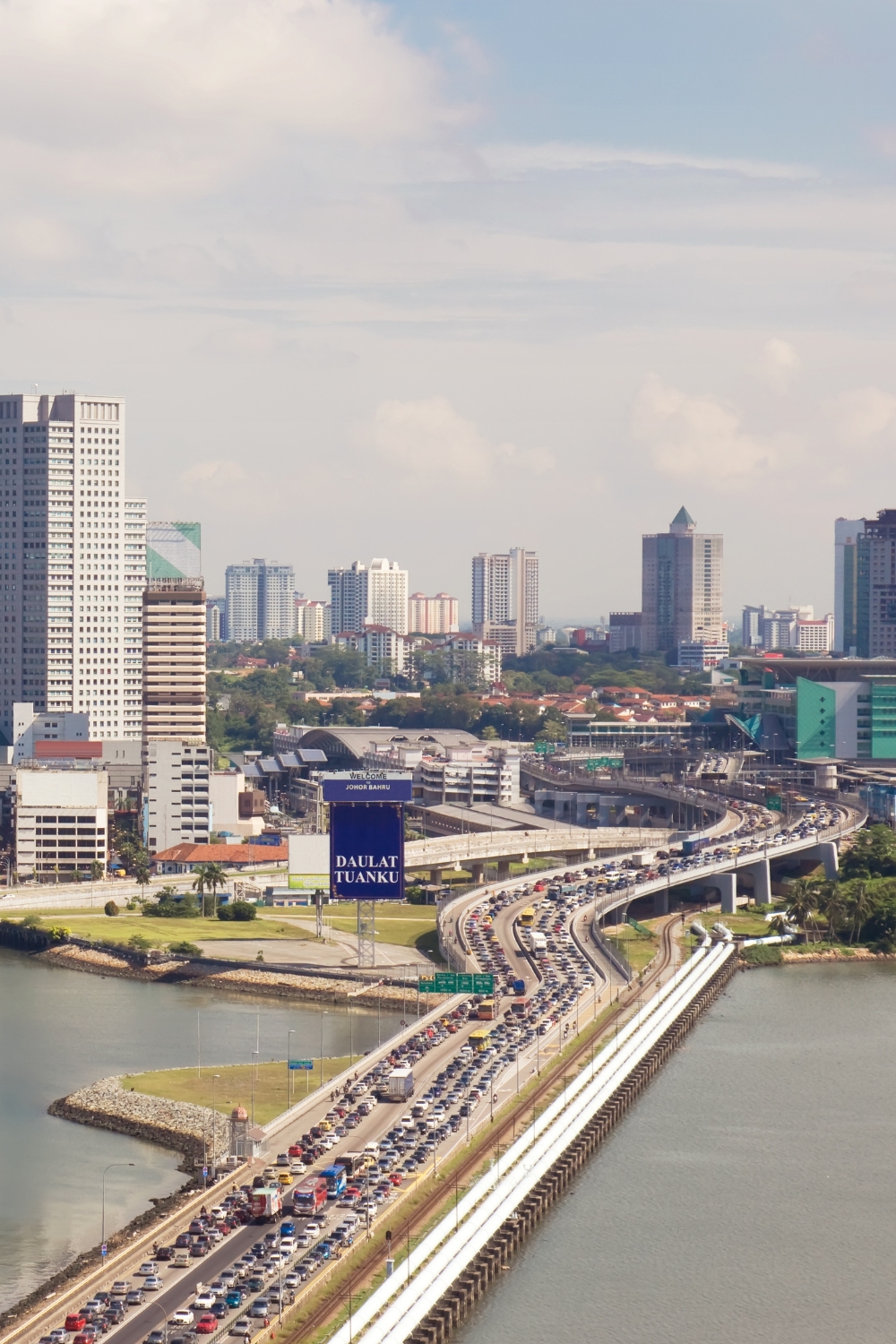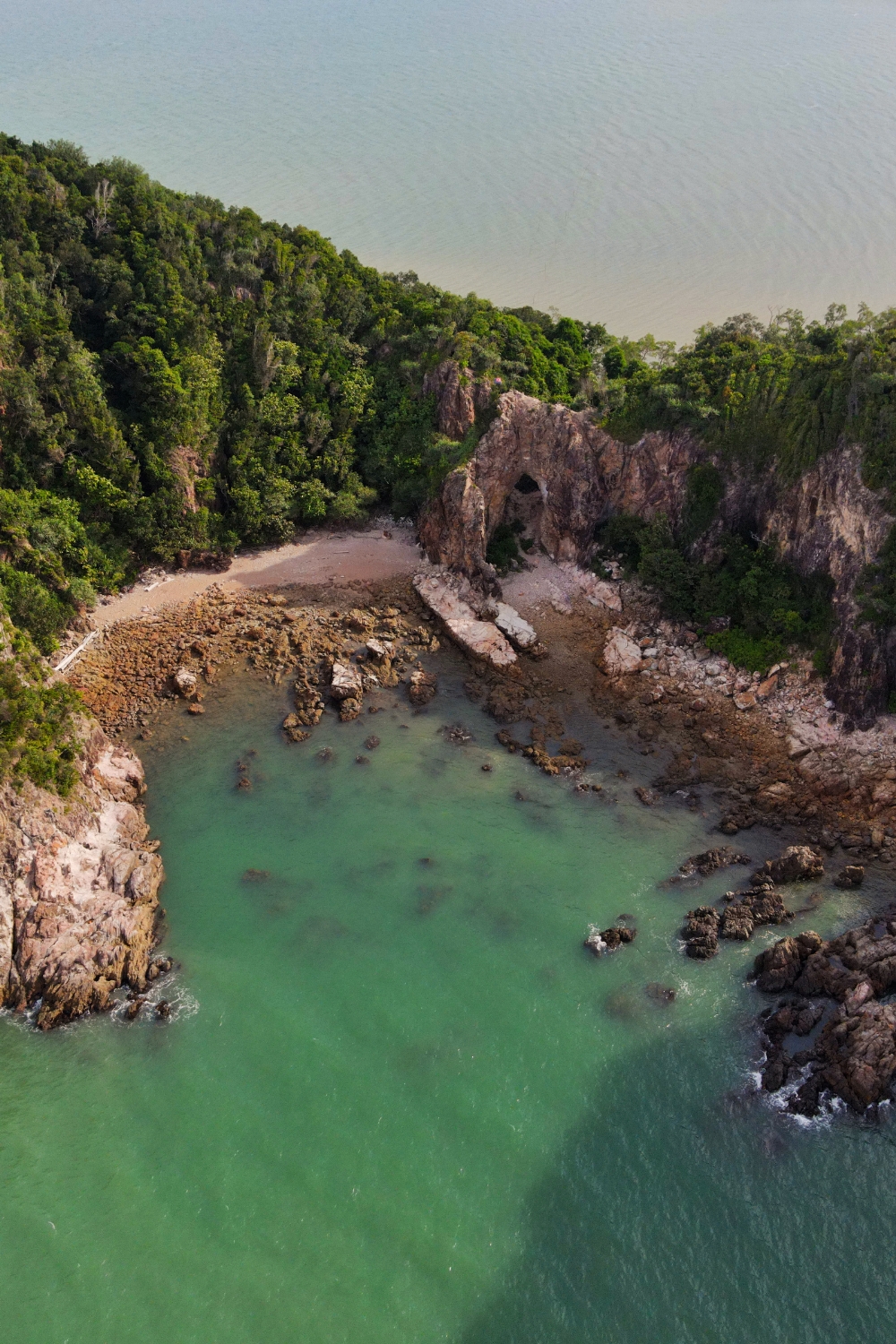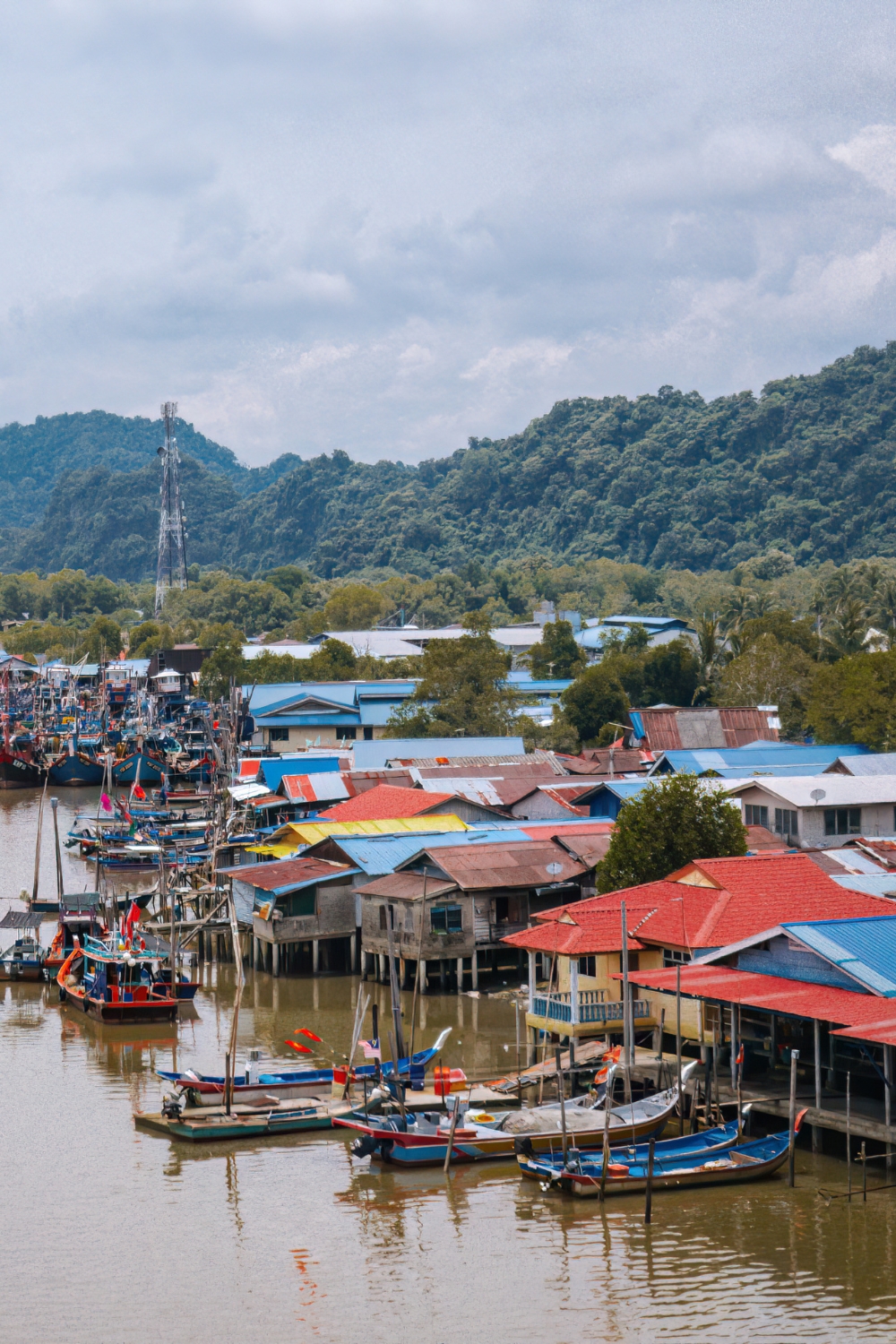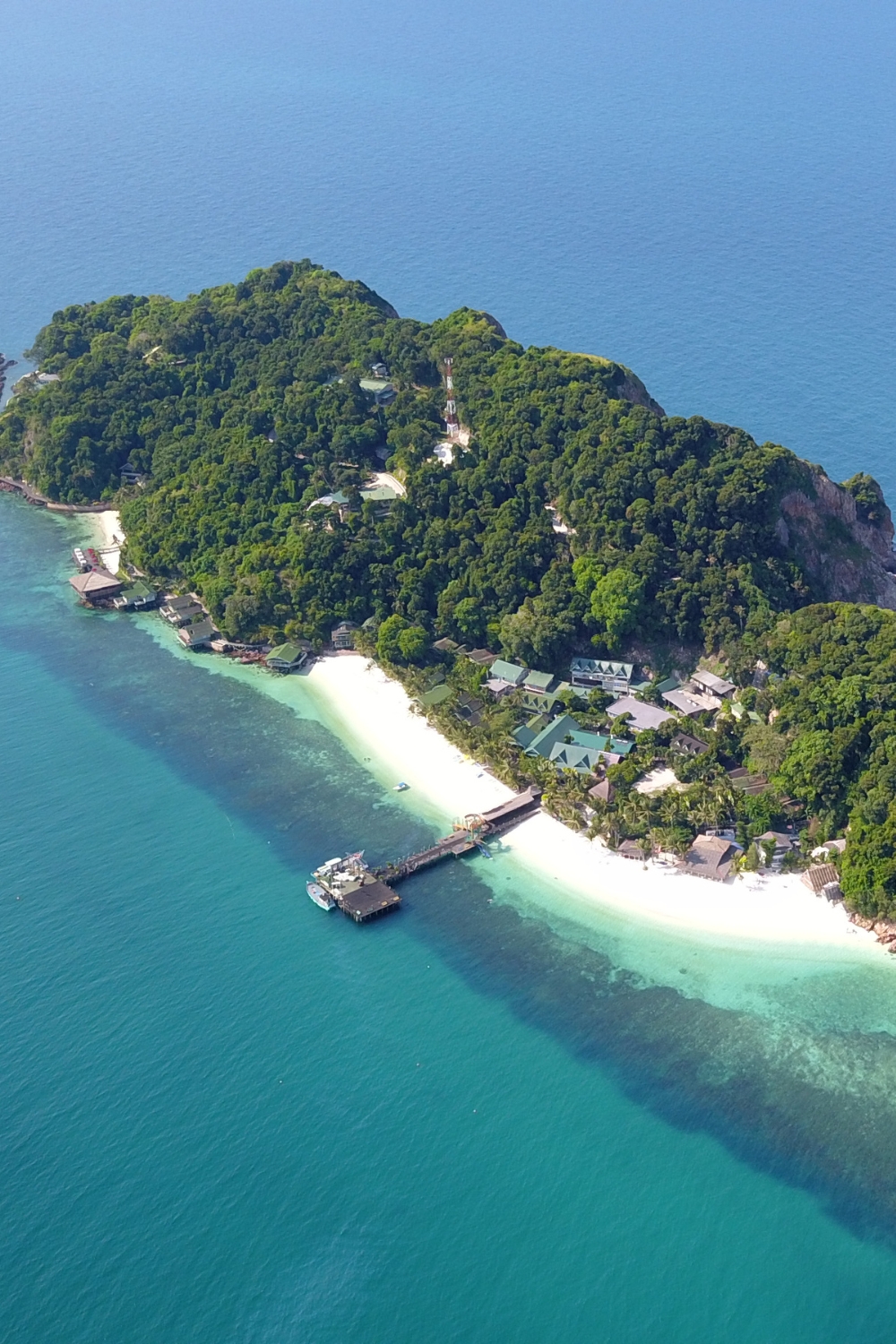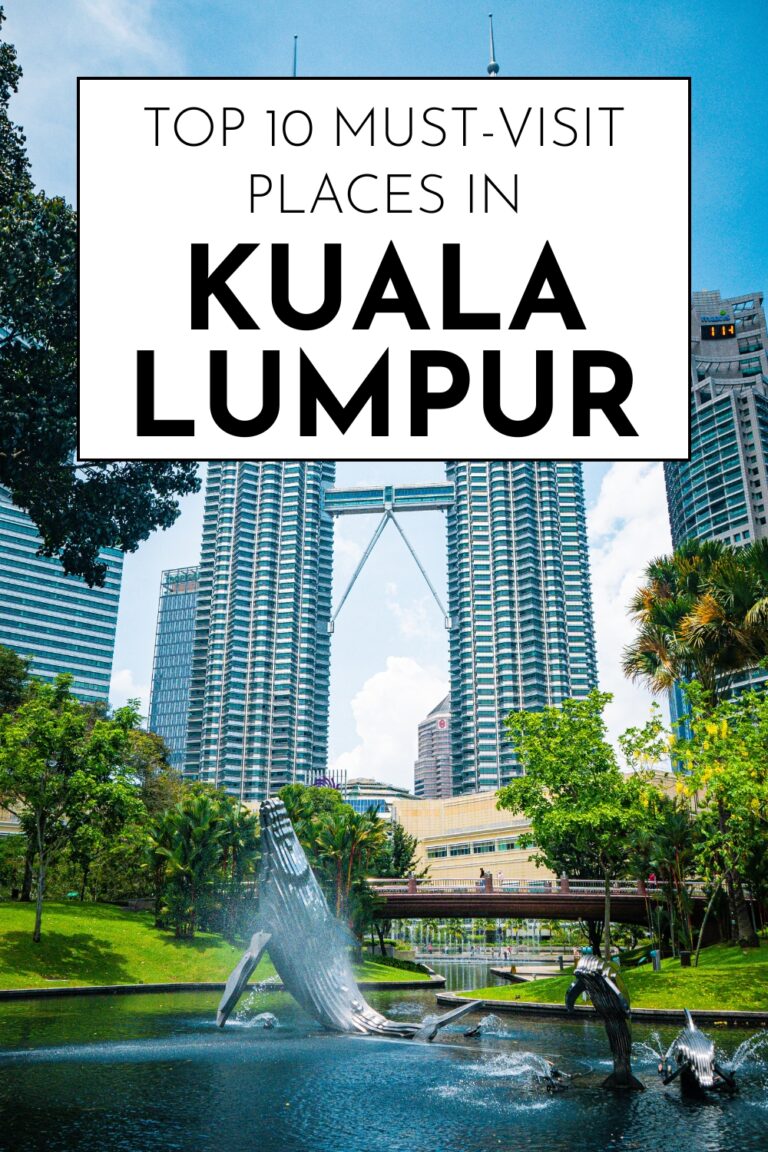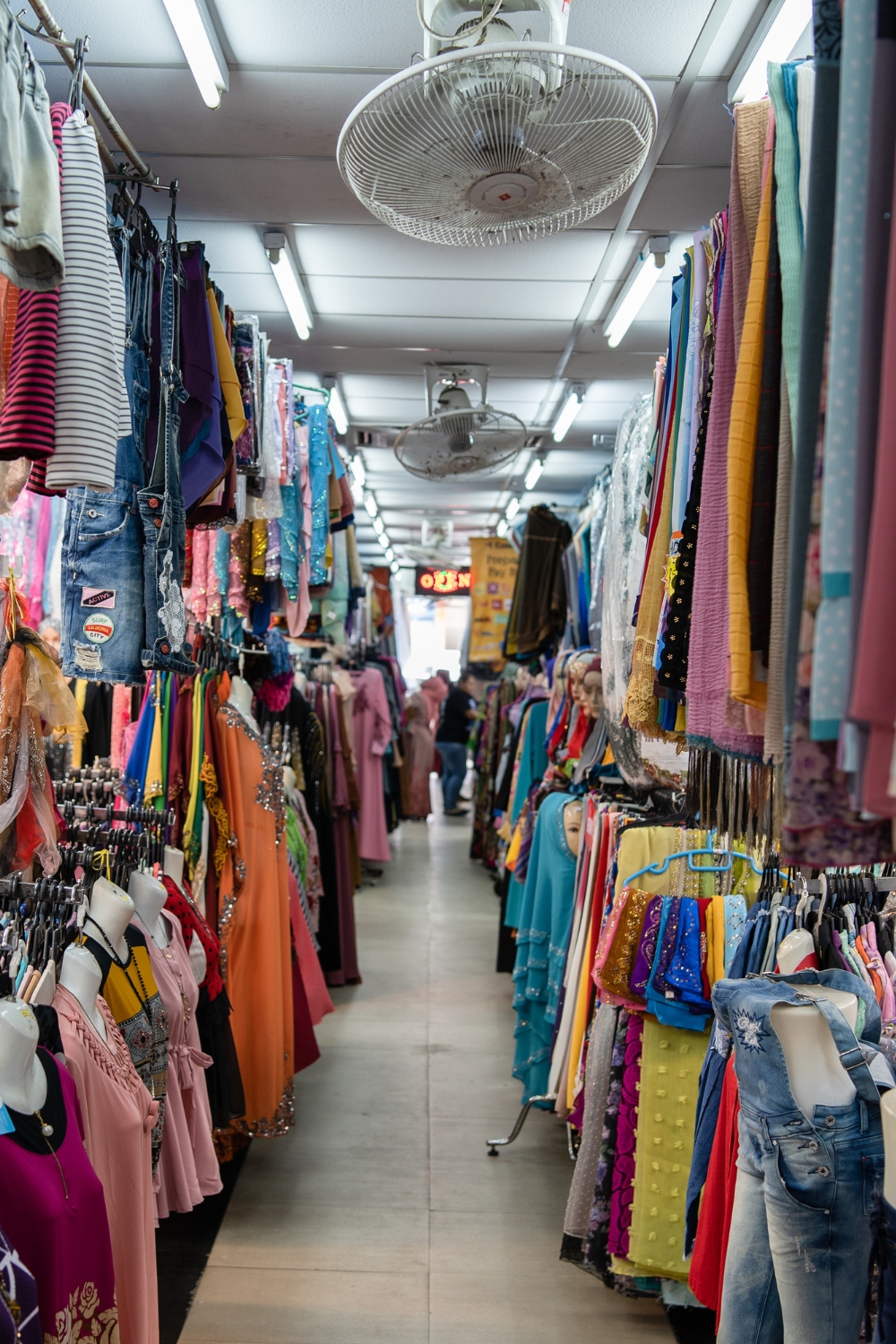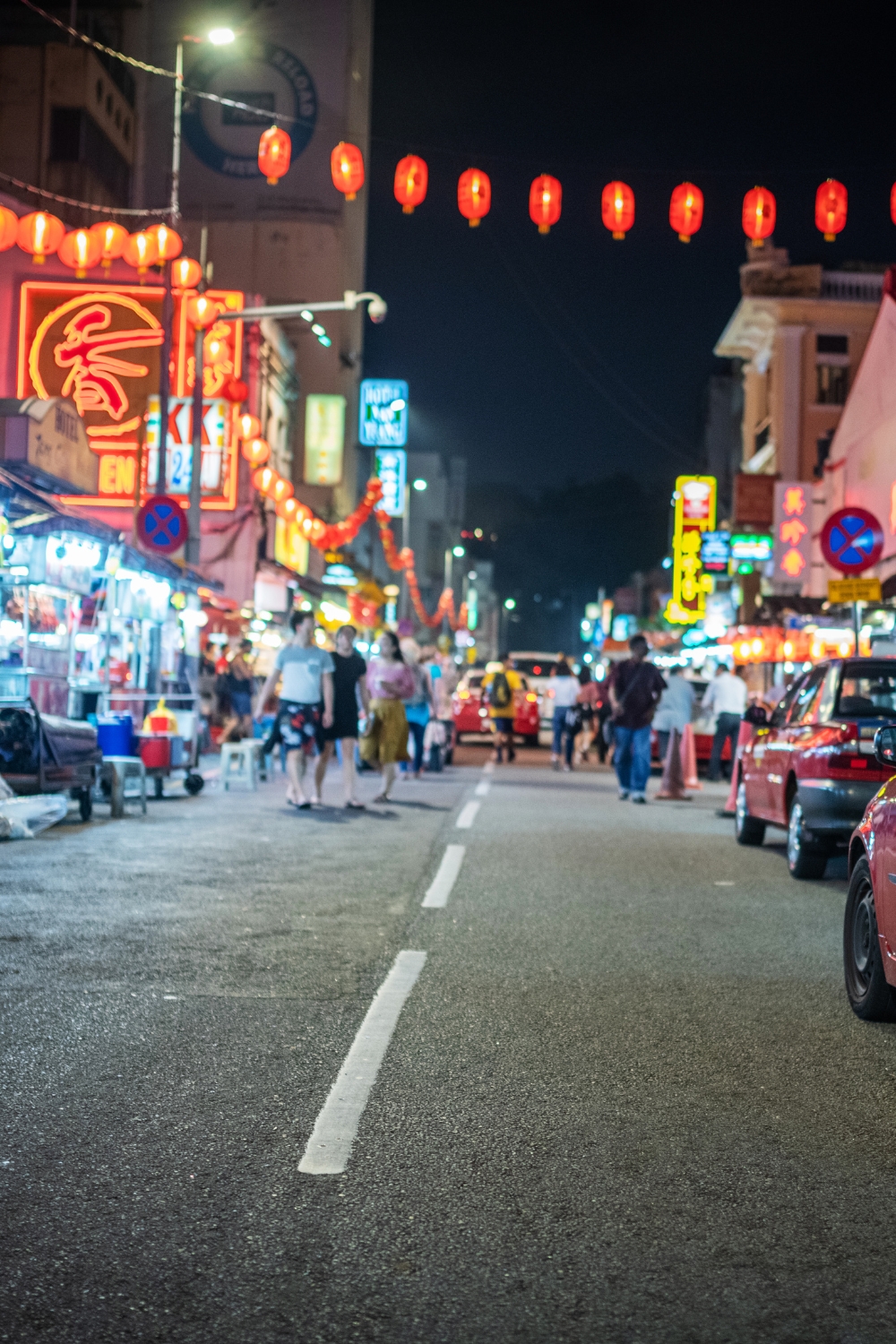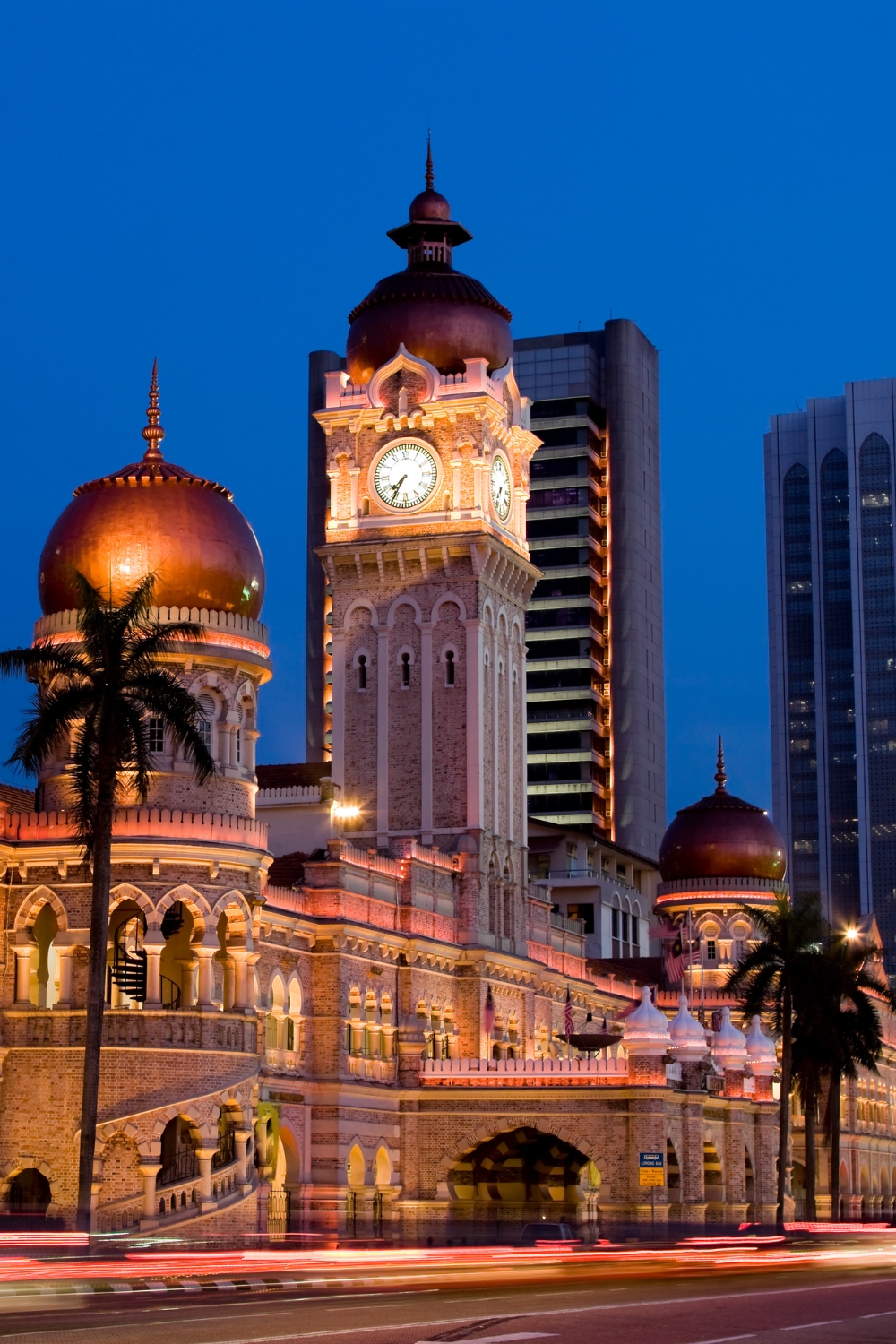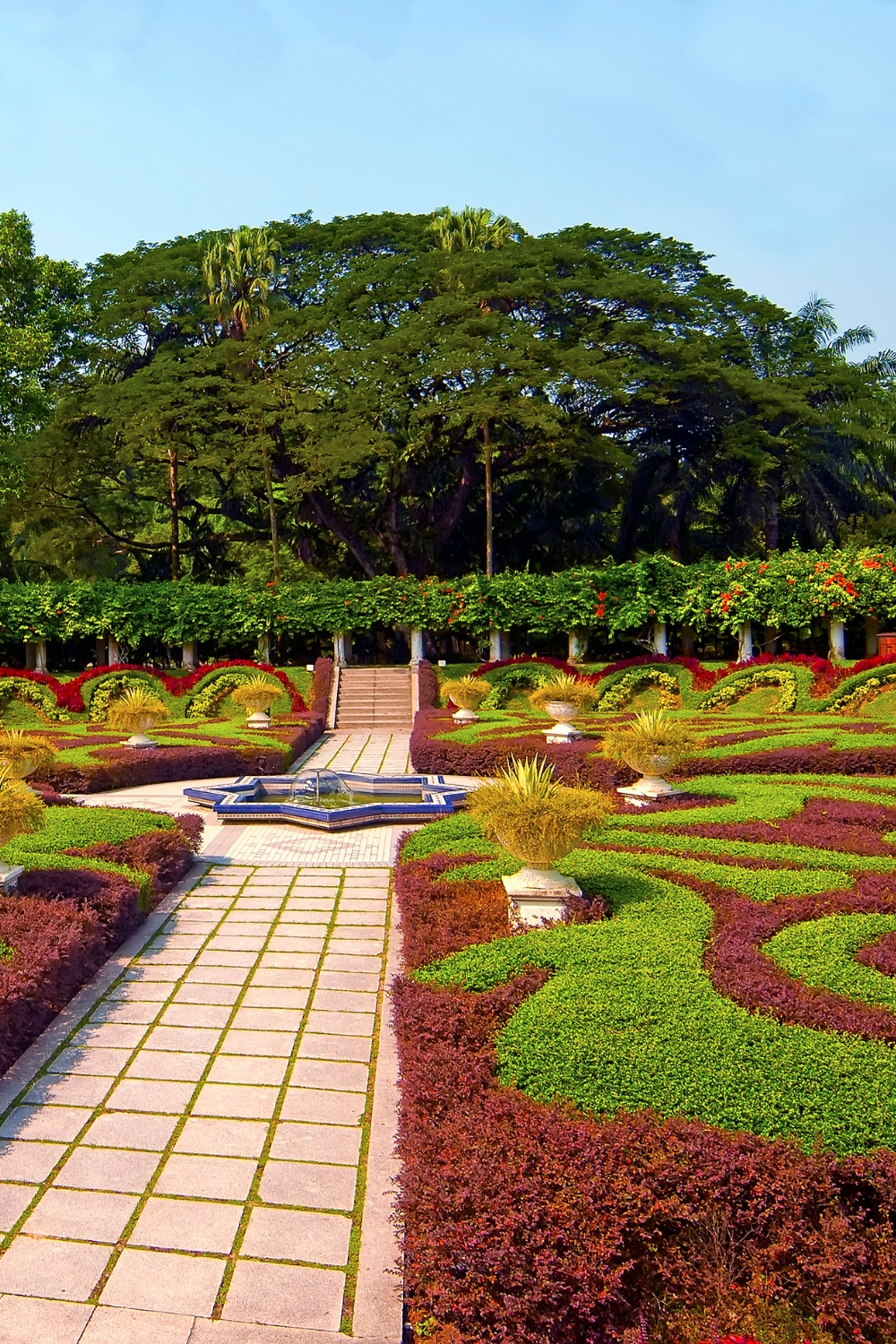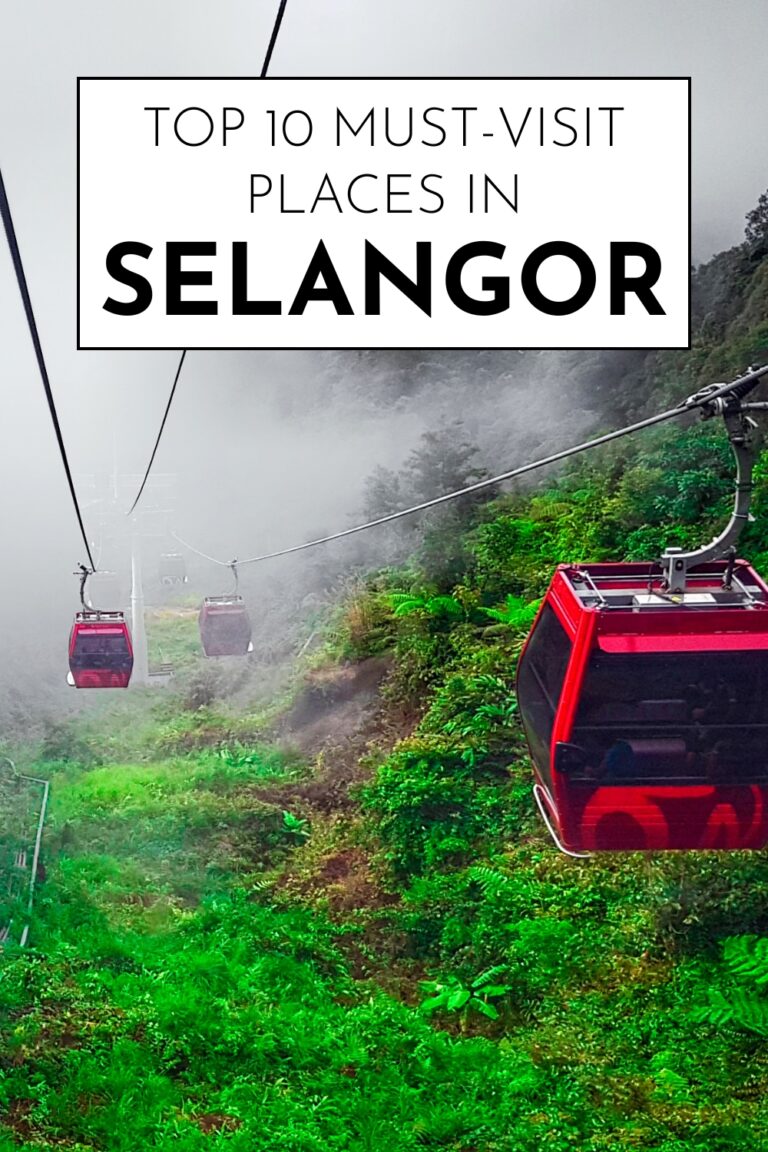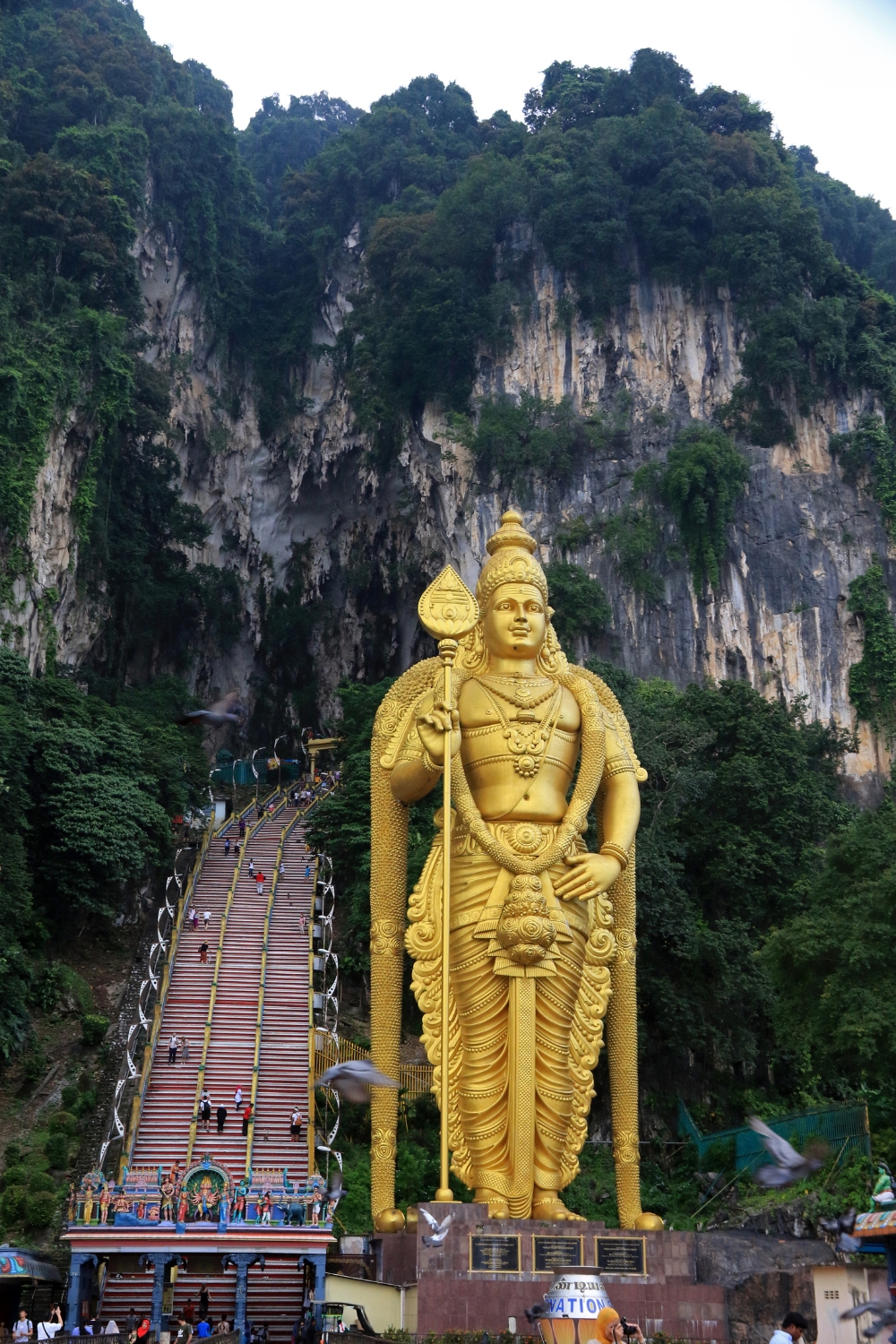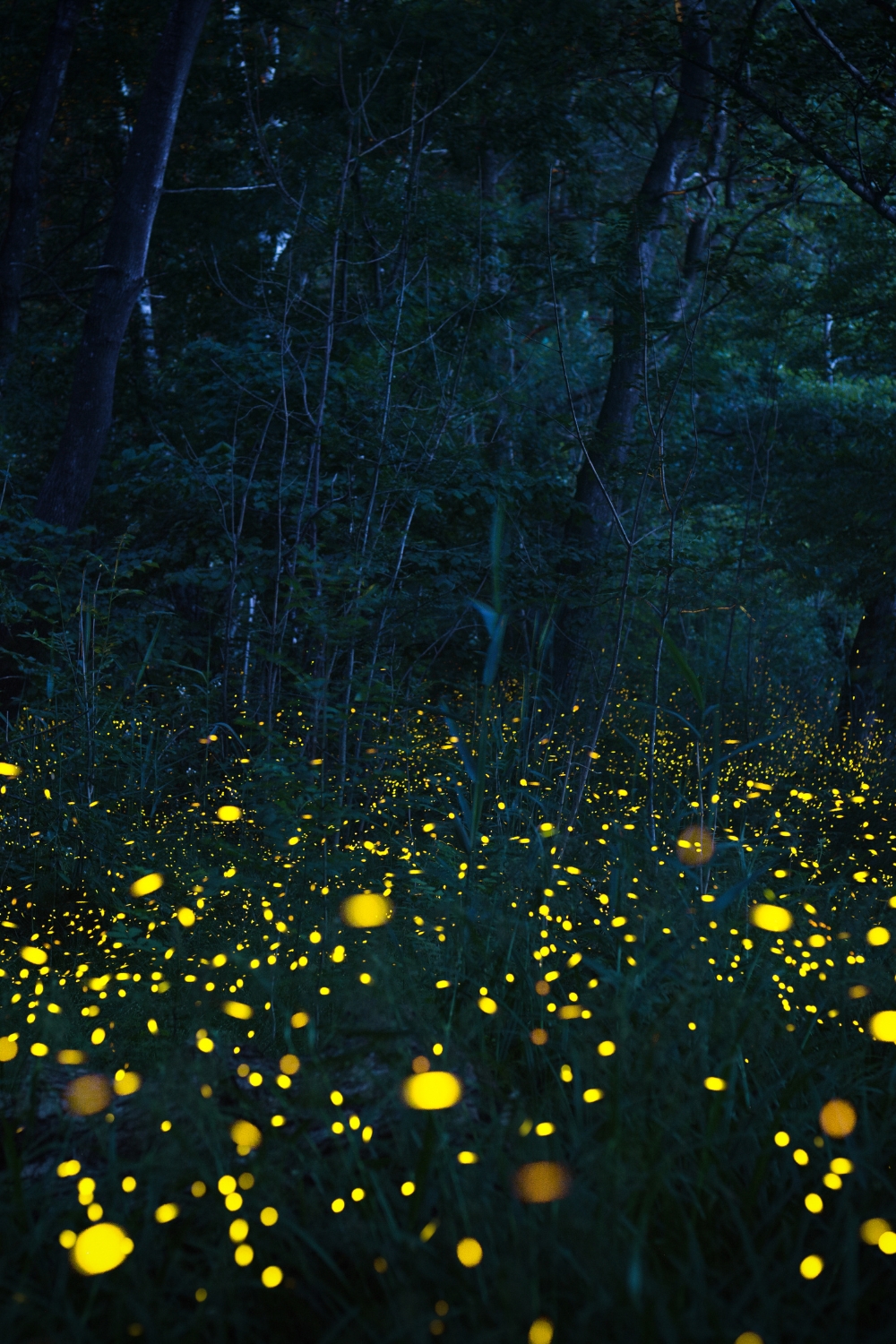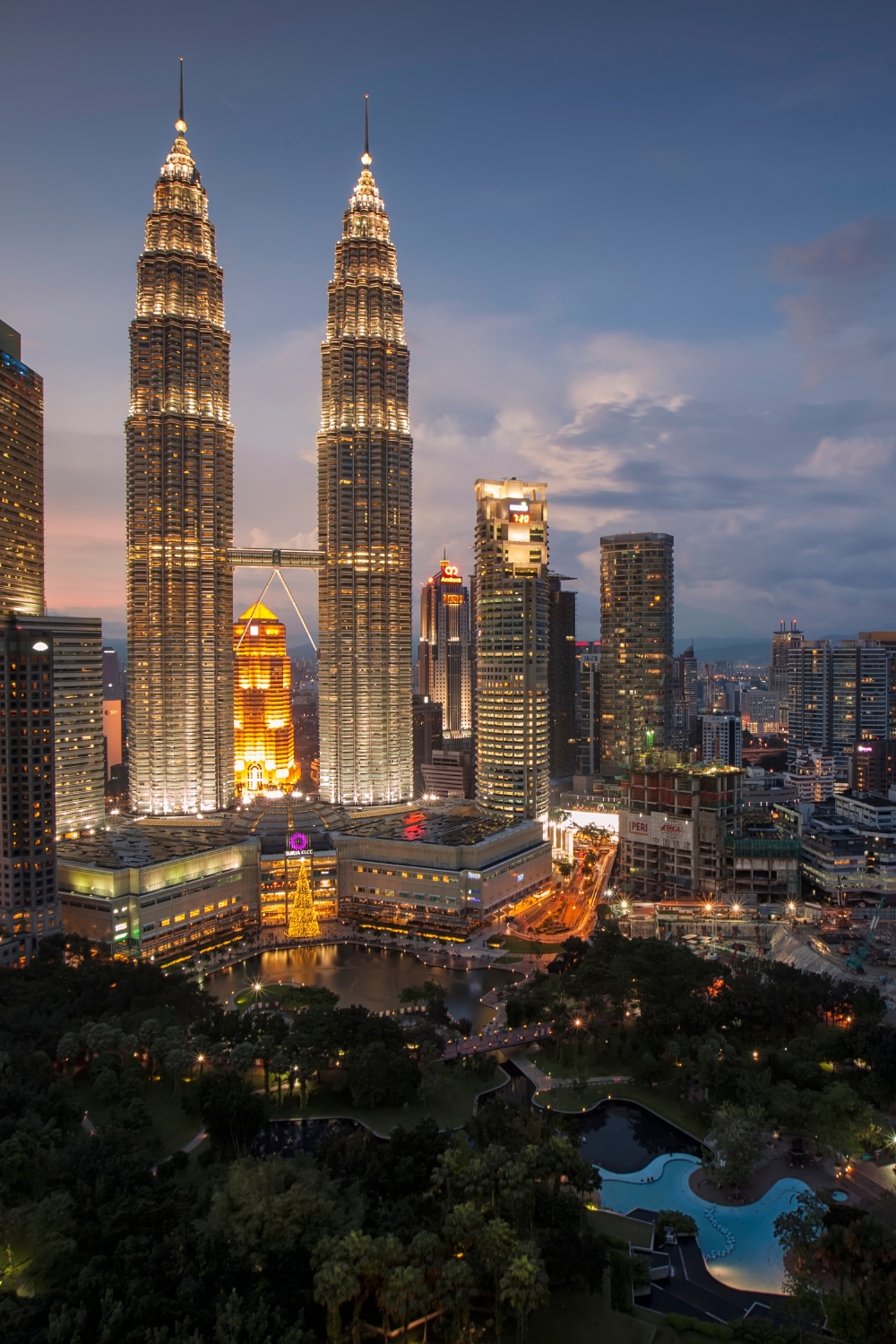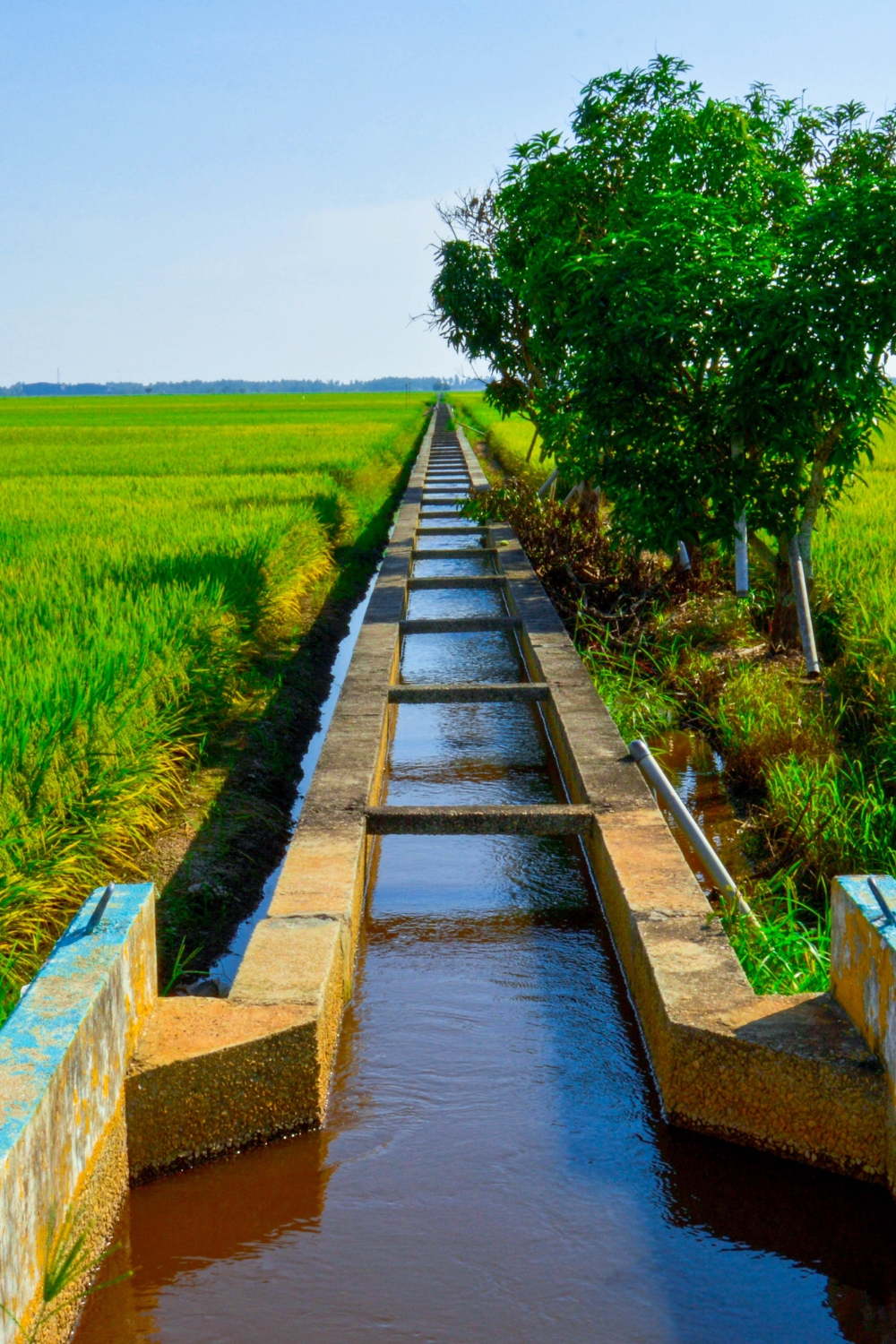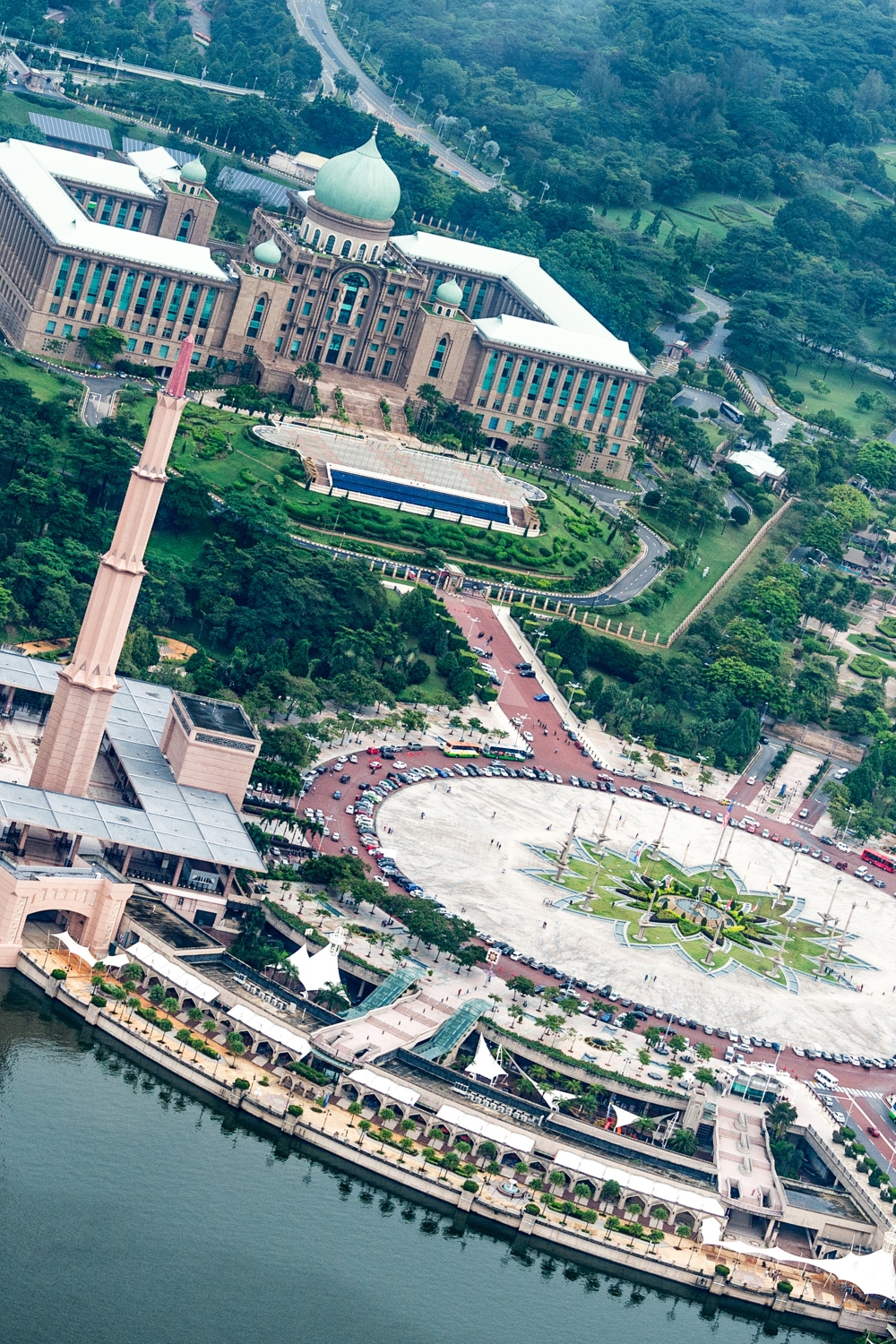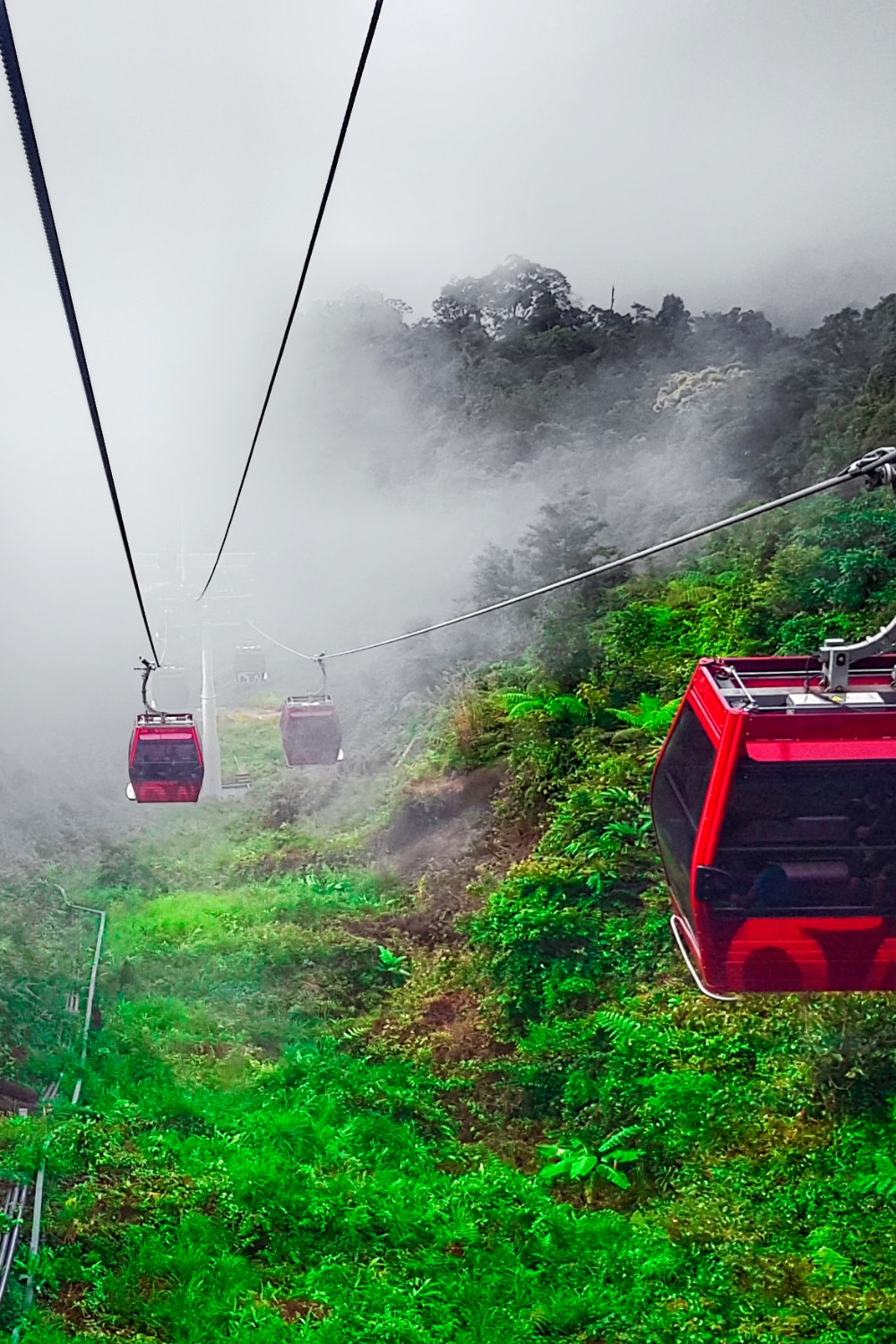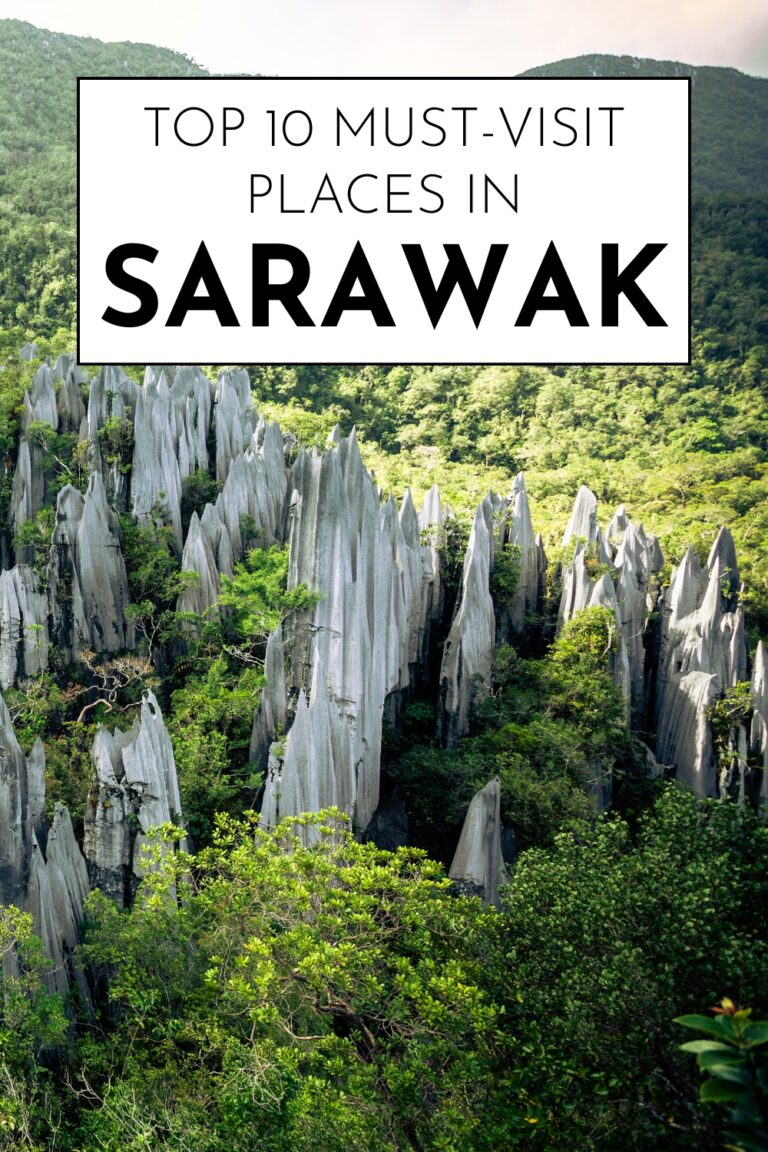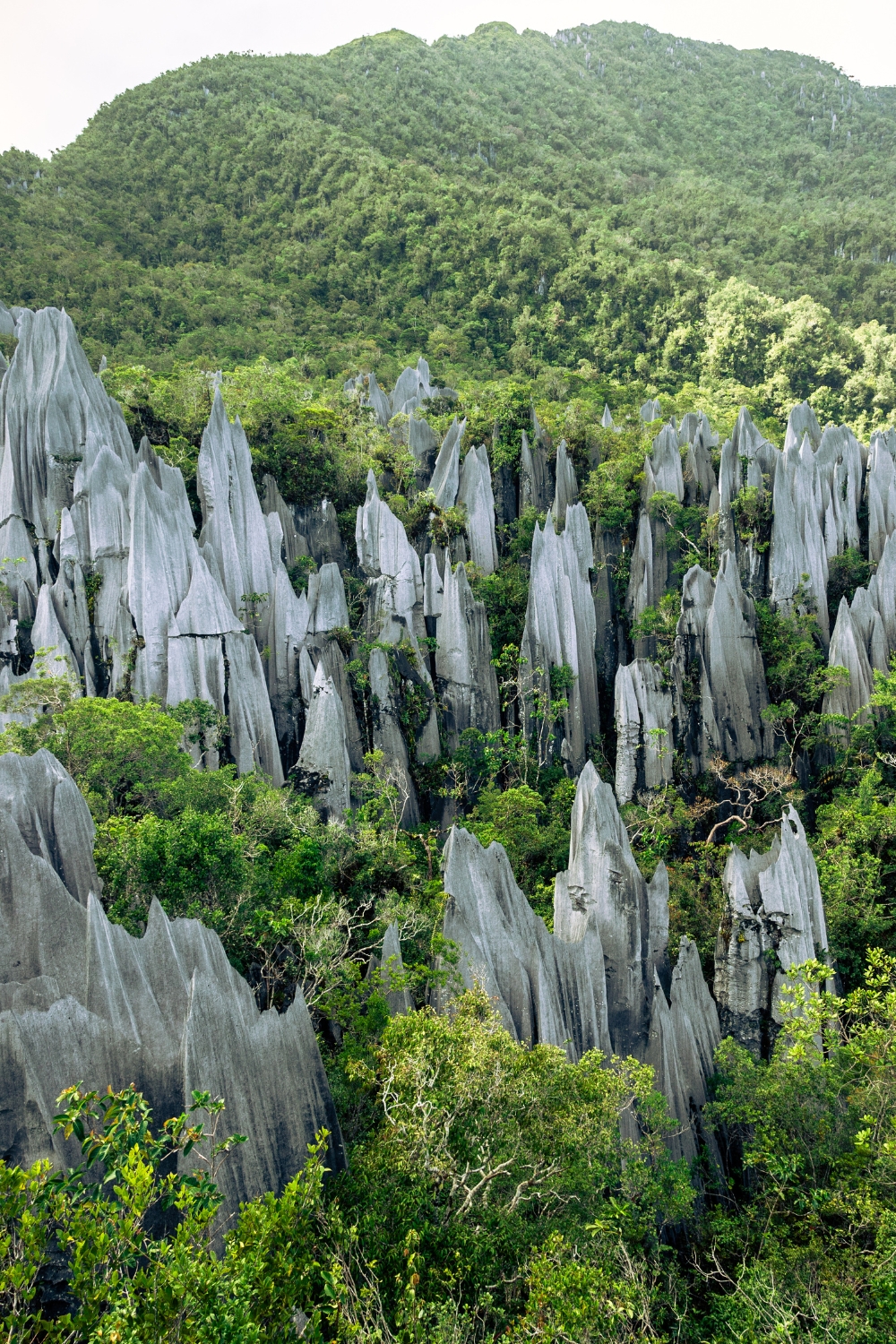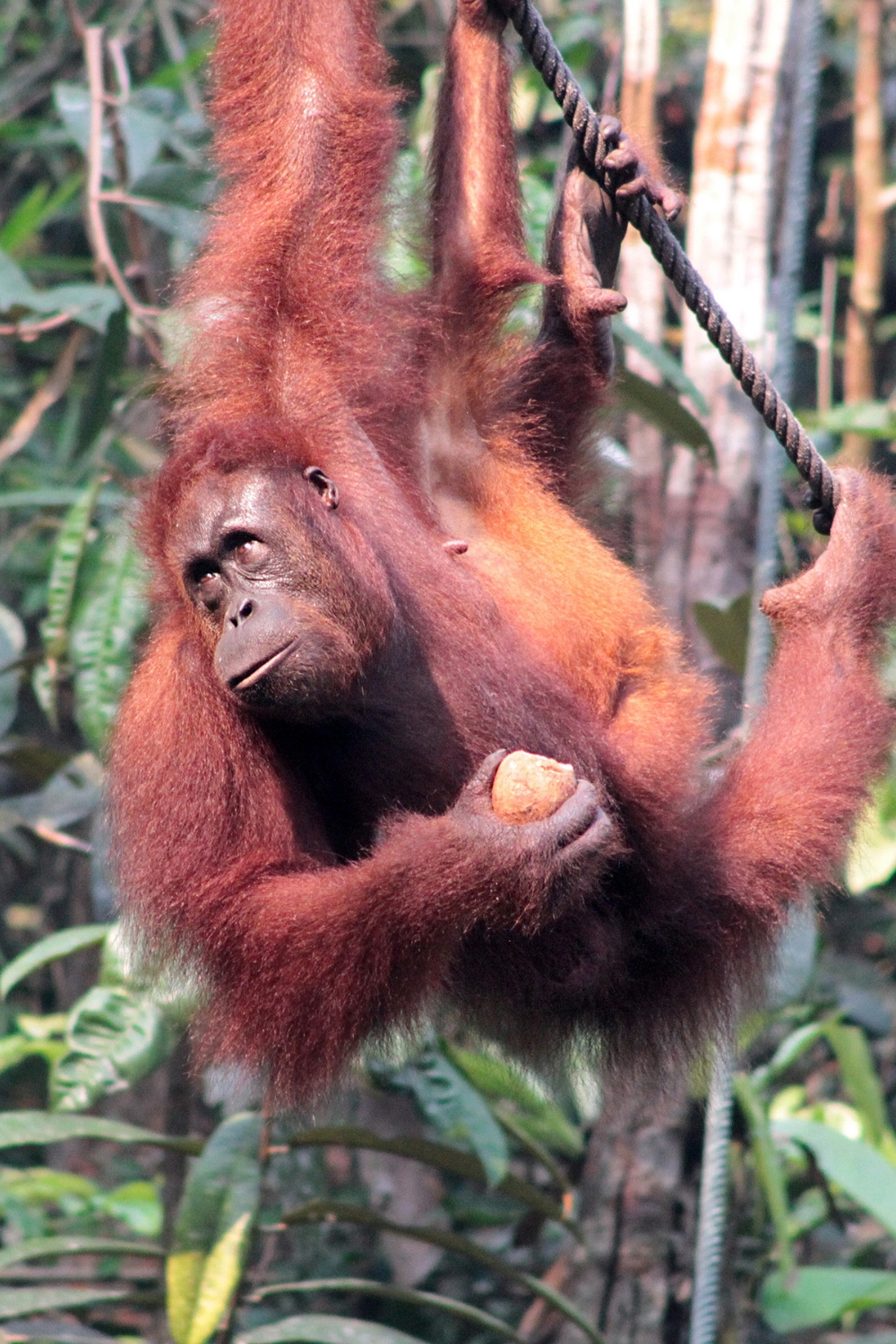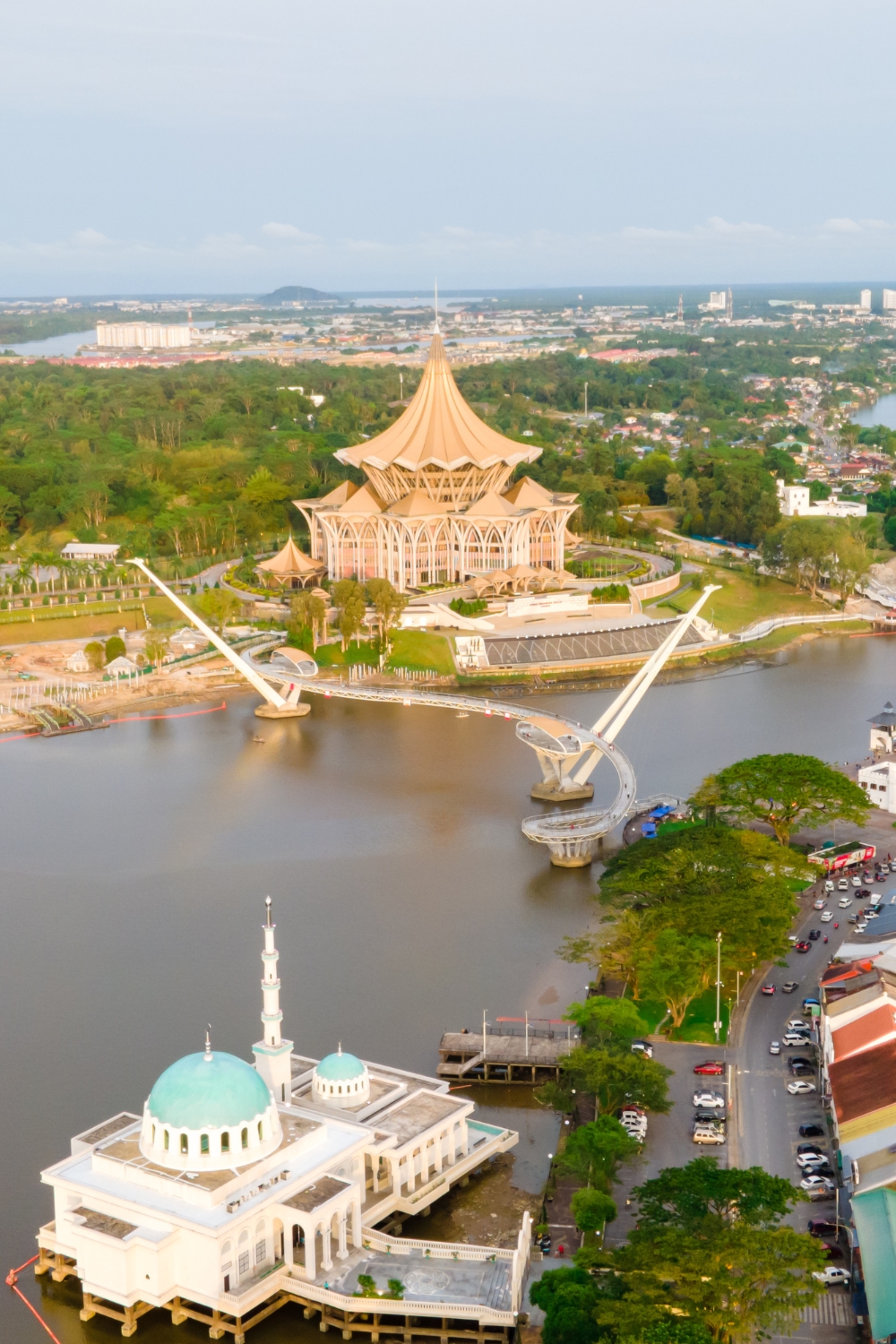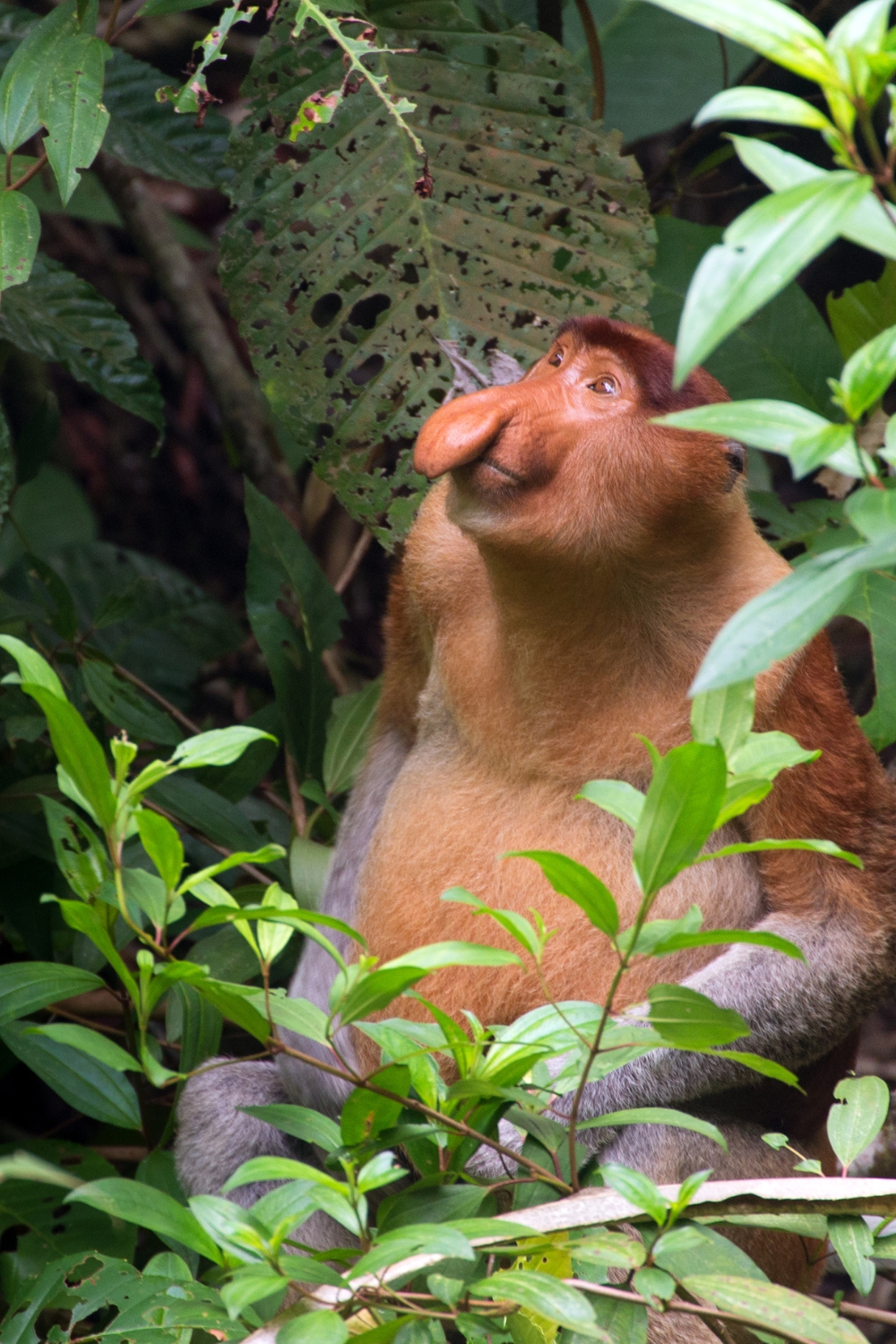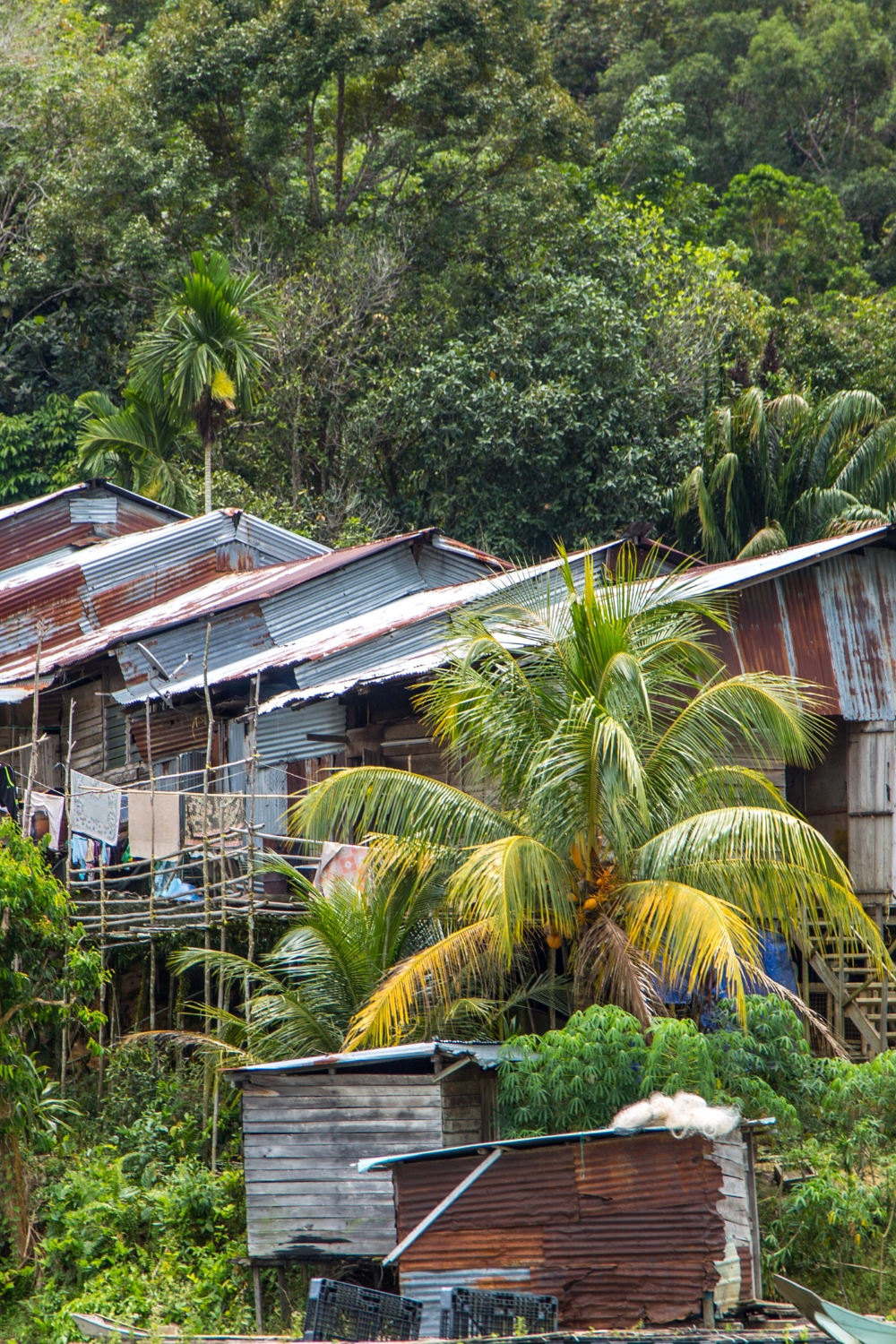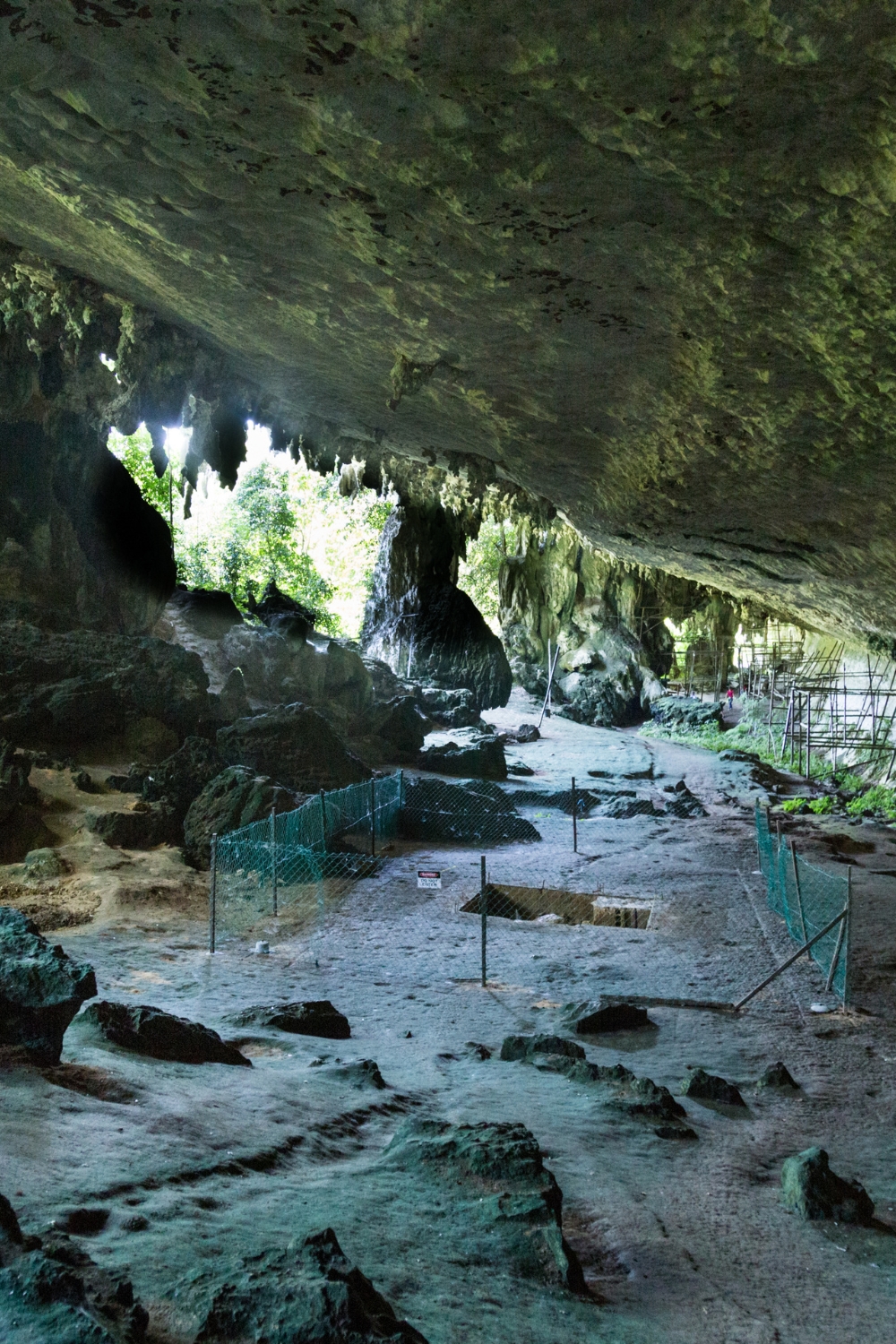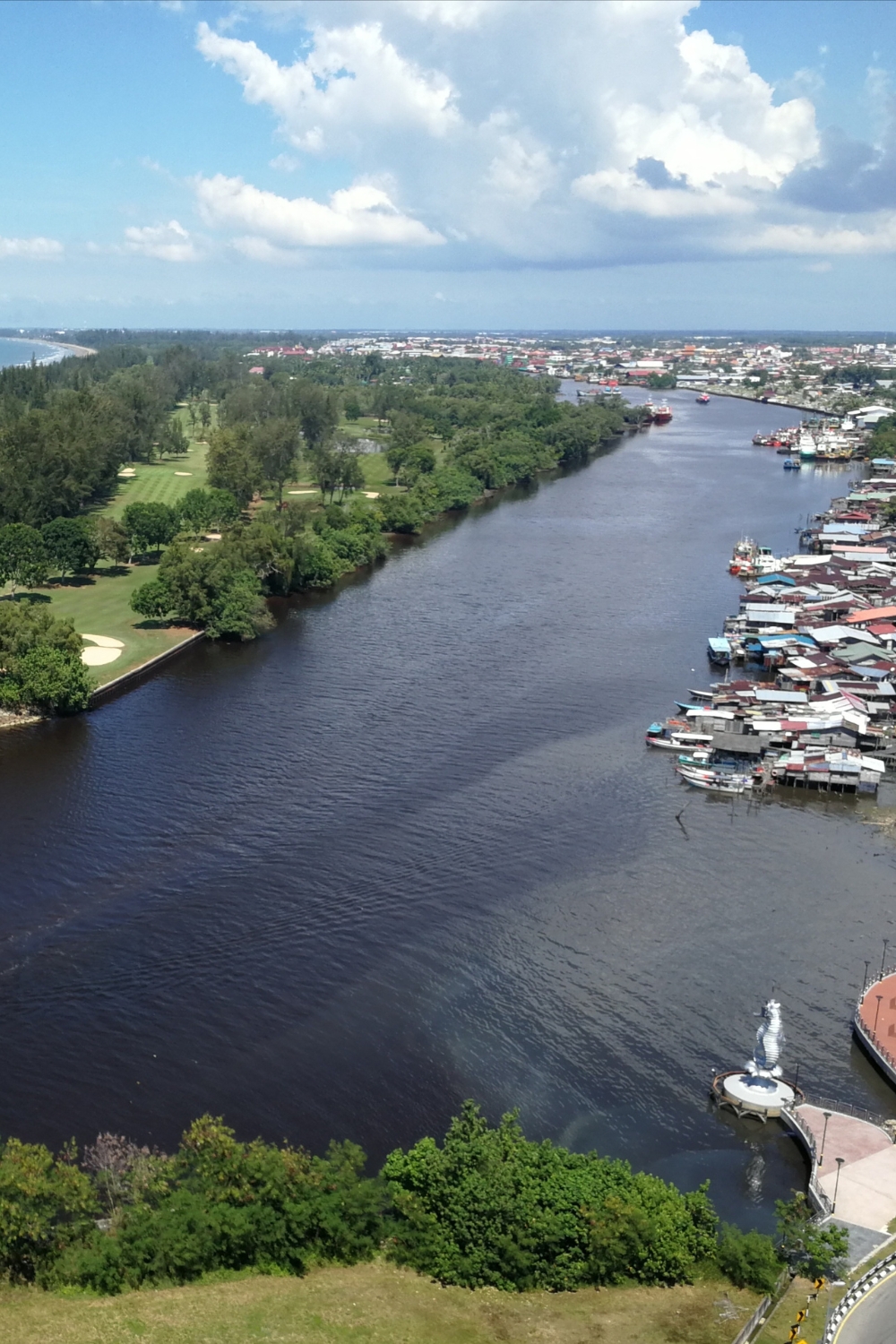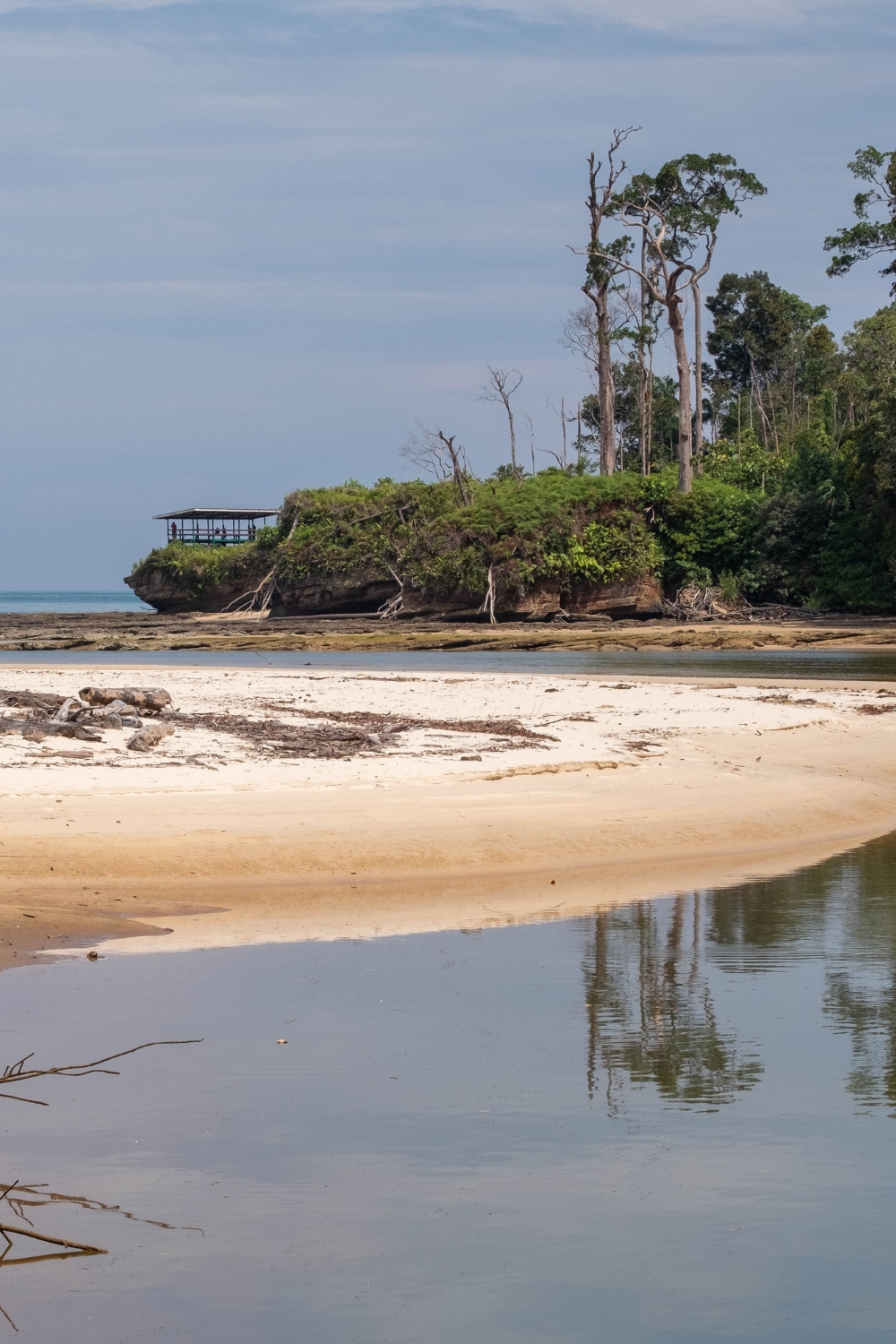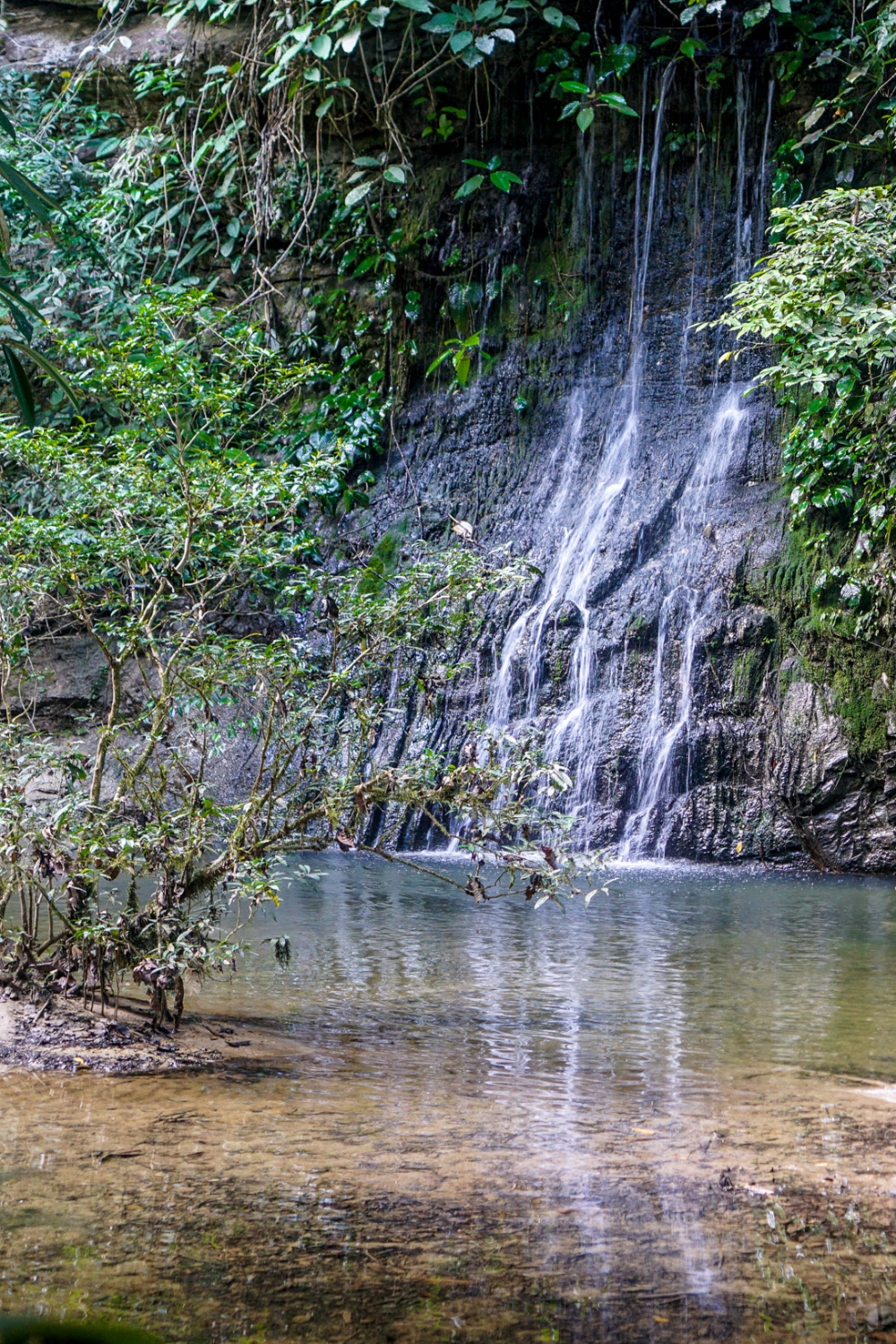Perak, Malaysia’s fourth-largest state, stands as one of the country’s most historically rich and naturally diverse destinations. Located on the west coast of Peninsular Malaysia, this captivating state offers visitors an incredible journey through time, from ancient cave temples to colonial architecture, pristine islands to lush rainforests.
Known as the “Land of Grace,” Perak has played a pivotal role in Malaysia’s history, particularly during the tin mining boom of the 19th and early 20th centuries. This legacy is still visible today in the grand colonial buildings, traditional shophouses, and heritage towns that dot the landscape. The state capital, Ipoh, has transformed from a sleepy tin mining town into a vibrant cultural hub renowned for its street art, coffee culture, and exceptional cuisine.
What makes Perak truly special is its incredible diversity of attractions packed into a relatively compact area. Within a few hours’ drive, you can explore mystical limestone caves, relax on tropical beaches, trek through virgin rainforest, and wander through UNESCO World Heritage sites. The state’s strategic location along the historic Strait of Malacca has created a unique blend of Malay, Chinese, Indian, and European influences that permeate everything from architecture to food.
Perak’s natural beauty is equally impressive. The state boasts some of Malaysia’s most spectacular limestone formations, creating dramatic karst landscapes dotted with caves and towering rock formations. The coastline features beautiful beaches and islands, while the interior is home to some of the world’s oldest rainforests, teeming with wildlife and offering incredible biodiversity.
The warmth and hospitality of Perak’s people add another layer of charm to any visit. Whether you’re sampling street food in Ipoh, exploring ancient temples, or relaxing on pristine beaches, you’ll find locals eager to share their stories and recommendations.
Let’s explore the ten most spectacular destinations that make Perak an essential stop for anyone traveling through Malaysia.
1. Ipoh Old Town – Heritage and Street Art Capital
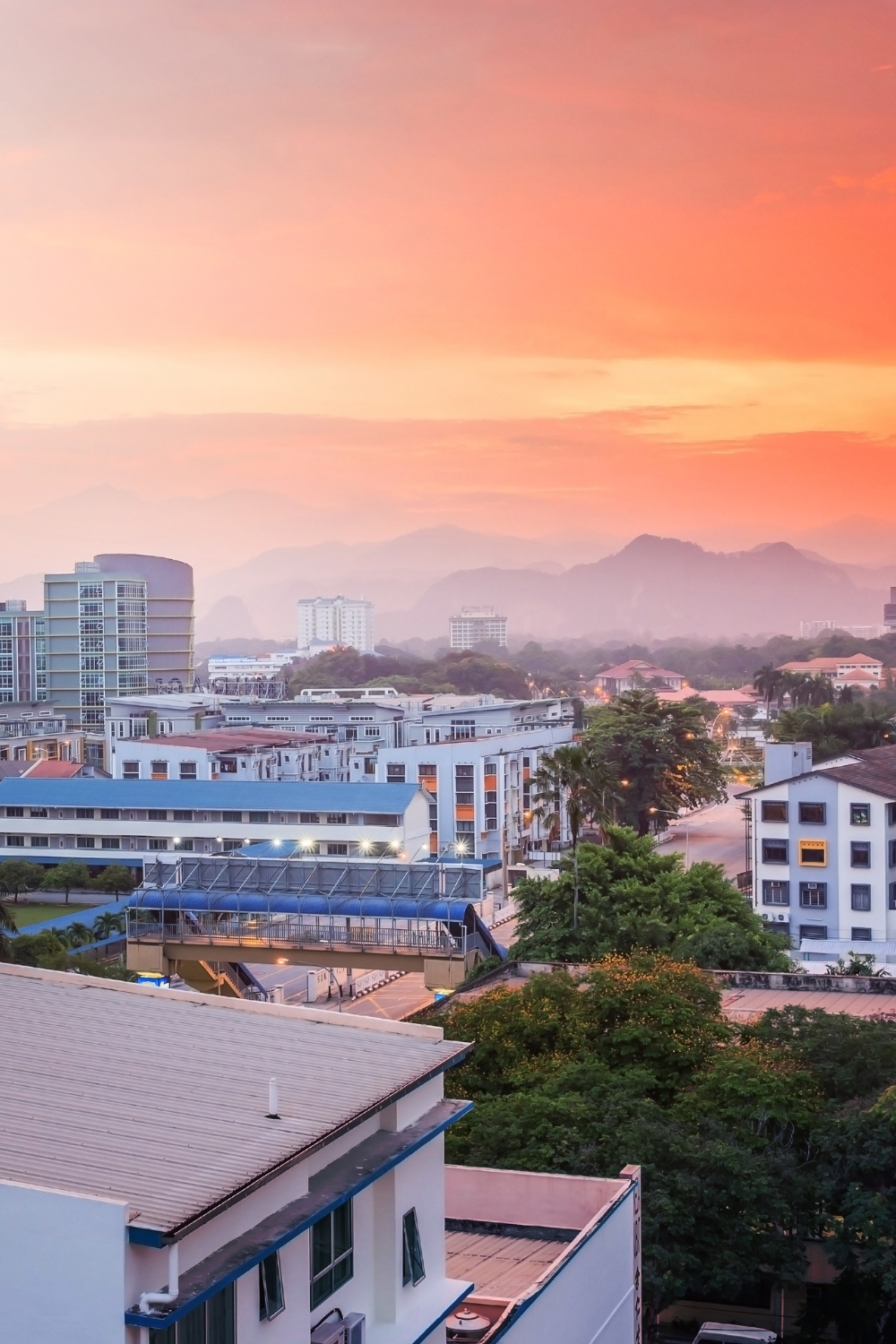
Ipoh Old Town represents the perfect blend of colonial heritage and contemporary creativity. This historic district has undergone a remarkable transformation from a fading tin mining center to one of Southeast Asia’s most celebrated street art destinations and culinary hotspots.
Colonial Architecture and Heritage Buildings
The old town showcases some of Malaysia’s finest colonial architecture, with the iconic Ipoh Railway Station serving as the crown jewel. Built in 1917, this magnificent structure combines Moorish and Victorian architectural styles, earning it the nickname “Taj Mahal of Ipoh.”
Walking through the heritage district reveals layers of history through shophouses, government buildings, and religious structures that span different eras. The Birch Memorial Clock Tower, Old Post Office, and Town Hall create a outdoor museum of colonial-era design and craftsmanship.
Many of these heritage buildings now house trendy cafes, boutique hotels, and art galleries, creating a vibrant atmosphere where history meets modernity. The preservation efforts have maintained the architectural integrity while allowing for contemporary uses that keep the area alive and relevant.
World-Famous Street Art and Murals
Ipoh’s street art scene gained international recognition through the work of Lithuanian artist Ernest Zacharevic and local artists who transformed blank walls into storytelling canvases. The murals blend seamlessly with the urban environment, often incorporating architectural elements and everyday objects.
The most famous pieces include “Old Uncle” drinking coffee, “Hummingbird” on Jalan Panglima, and “The Awaiting Trishaw Peddler” on Jalan Bijeh Timah. Each mural tells a story about local life, history, or culture, creating an outdoor gallery that spans several city blocks.
New artworks continue to appear regularly, making each visit to Ipoh a potential discovery of fresh creative expressions. The street art has become a major tourist attraction while also serving as a catalyst for urban renewal and cultural pride.
Best exploration method: Walking tours (2-3 hours)
Photography: Best light in early morning and late afternoon
Parking: Multiple public parking areas available
Combine with: Coffee culture exploration, heritage building visits
2. Kellie’s Castle – Unfinished Scottish Dream
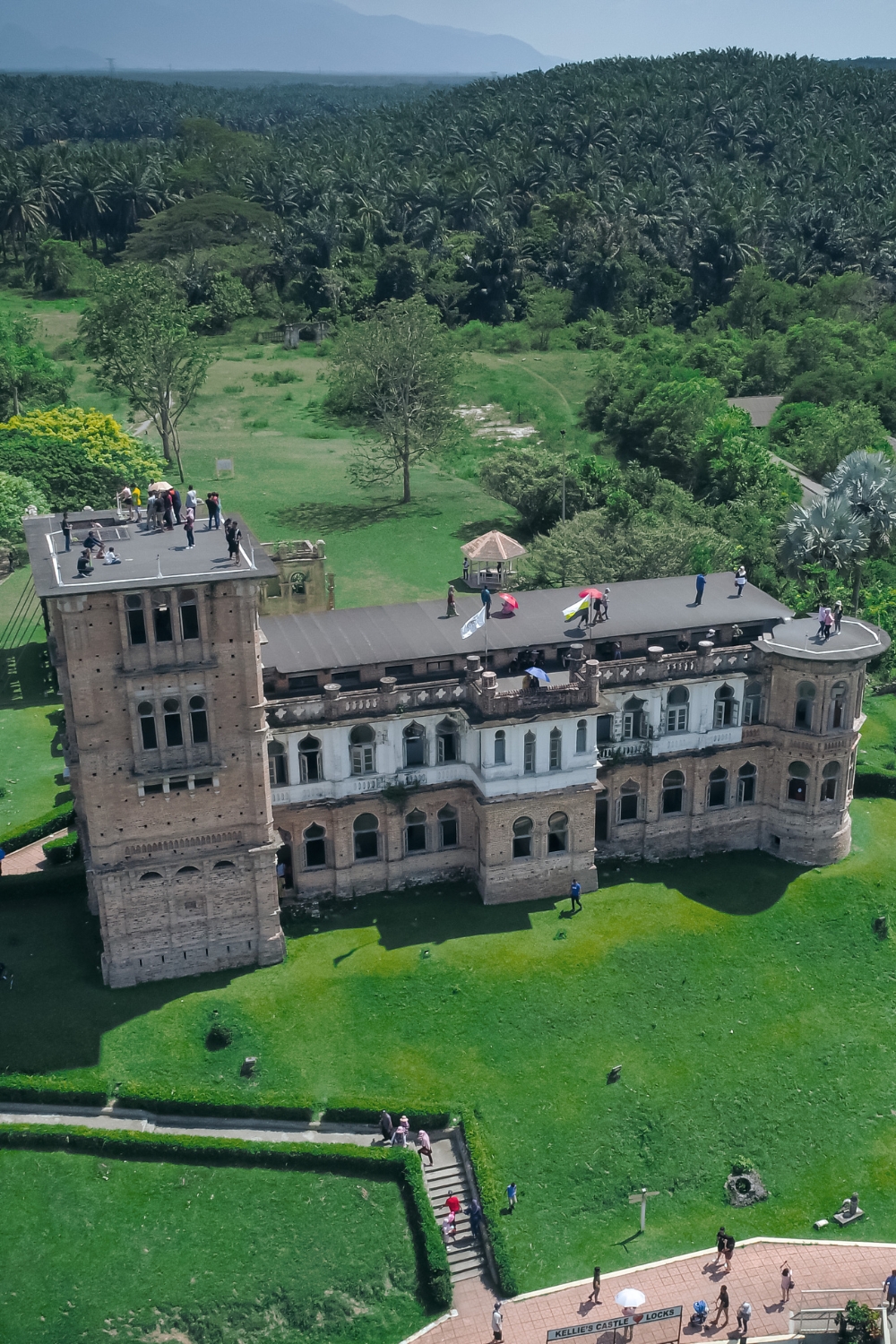
Kellie’s Castle stands as one of Malaysia’s most intriguing historical mysteries – an unfinished Moorish-style mansion that tells the story of ambition, tragedy, and colonial-era excess. This haunting structure has become one of Perak’s most photographed landmarks and popular tourist destinations.
The Story Behind the Castle
Built by Scottish planter William Kellie Smith in the early 1900s, the castle was intended as a grand residence for his family. Smith made his fortune in rubber plantations and tin mining, accumulating enough wealth to pursue his dream of creating a Scottish castle in the Malaysian jungle.
The construction incorporated cutting-edge technology for its time, including Malaya’s first elevator and indoor plumbing. Smith imported skilled craftsmen from India and used local materials combined with European architectural concepts to create this unique fusion structure.
Tragedy struck when Smith died unexpectedly in 1926 while on a trip to England, leaving his dream castle forever unfinished. His family eventually abandoned the project, and the structure has remained in its incomplete state for nearly a century.
Architectural Marvel and Exploration
The castle’s Moorish-inspired architecture creates a striking contrast against the tropical landscape. Multiple levels, courtyards, and rooftop terraces offer different perspectives and photo opportunities, while the unfinished rooms and corridors create an atmosphere of mystery and imagination.
Visitors can explore the various levels via the original elevator shaft (now converted to stairs) and walk through rooms that offer glimpses of what might have been. The rooftop provides panoramic views of the surrounding palm oil plantations and distant mountains.
The castle’s deterioration has been carefully managed to maintain safety while preserving its atmospheric qualities. Information boards throughout the structure provide historical context and architectural details that bring the story to life.
Opening hours: Daily 9:00 AM – 6:00 PM
Entry fee: Adults RM 5, Children RM 2
Duration: 1-2 hours
Best for: Photography, history enthusiasts, architecture lovers
3. Pangkor Island – Tropical Paradise
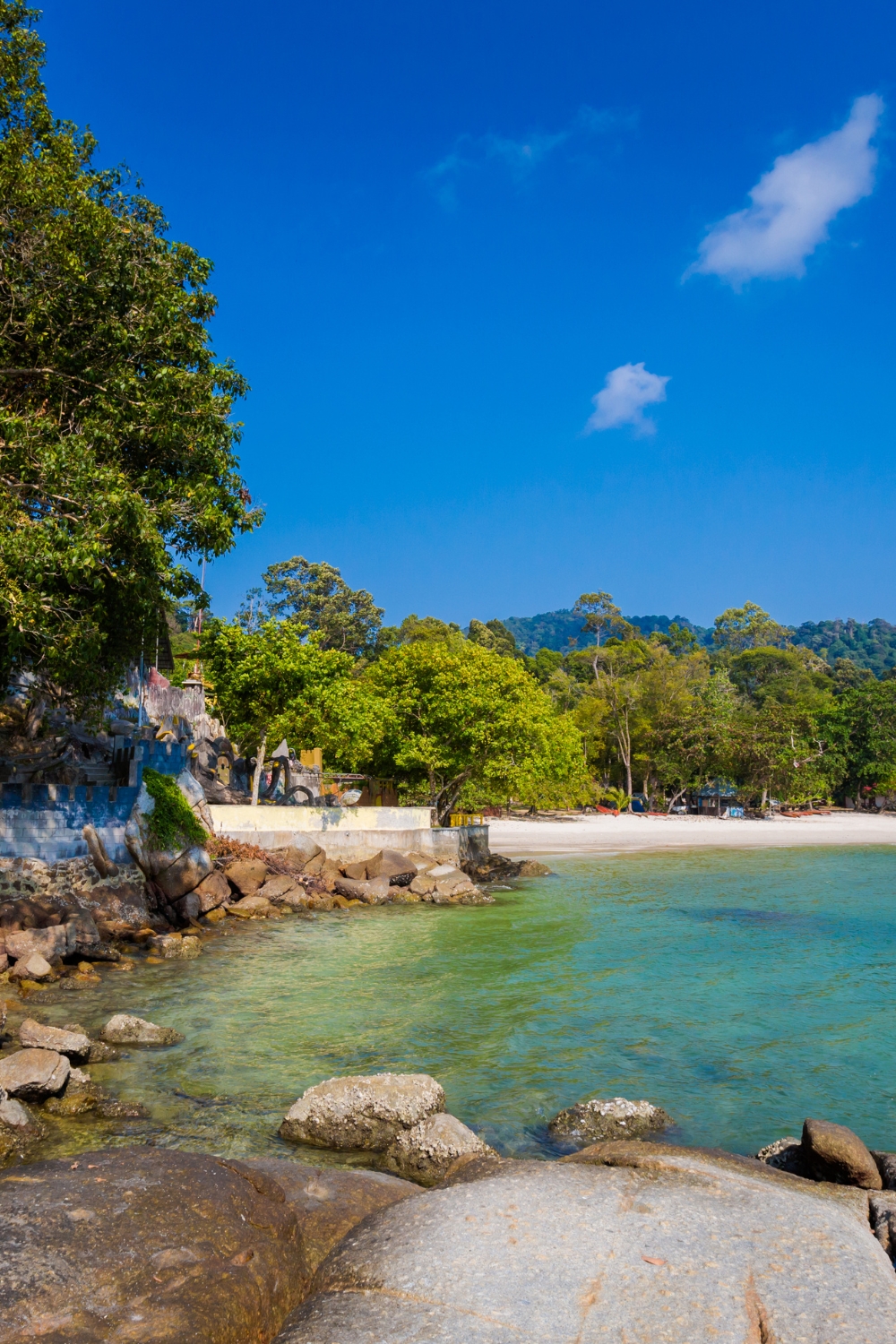
Pangkor Island offers a perfect tropical escape just off Perak’s coast, combining pristine beaches, crystal-clear waters, and laid-back island atmosphere. This easily accessible paradise provides everything from luxury resorts to budget-friendly accommodations, making it suitable for all types of travelers.
Pristine Beaches and Water Activities
Pangkor Island boasts several stunning beaches, each offering different experiences and atmospheres. Pasir Bogak Beach serves as the main beach with the most facilities, restaurants, and accommodation options, while Teluk Nipah offers a more secluded and backpacker-friendly environment.
The island’s waters are perfect for swimming, snorkeling, and various water sports. Coral reefs around the island provide excellent snorkeling opportunities, while fishing trips and island hopping tours allow visitors to explore the surrounding waters and smaller islands.
Beach activities range from jet skiing and banana boat rides to peaceful sunset walks and beachside dining. The island’s compact size makes it easy to explore multiple beaches in a single day or find your perfect spot for extended relaxation.
Island Culture and Local Life
Despite its tourism development, Pangkor Island maintains a strong local fishing community and traditional island culture. The main town features traditional shophouses, local markets, and fishing villages that provide insight into authentic island life.
Local restaurants serve exceptional seafood caught fresh daily, with preparations ranging from traditional Malay and Chinese styles to contemporary fusion cuisine. The island’s famous products include salted fish, dried seafood, and traditional boat-building crafts.
Bicycle rentals provide an excellent way to explore the island at a relaxed pace, while local buses connect the major beaches and attractions. The island’s small size and friendly atmosphere make it easy to interact with locals and learn about their way of life.
Getting there: Ferry from Lumut (45 minutes)
Best beaches: Pasir Bogak, Teluk Nipah, Coral Bay
Activities: Swimming, snorkeling, fishing, cycling
Accommodation: Wide range from budget to luxury
4. Perak Tong Cave Temple – Spiritual Marvel
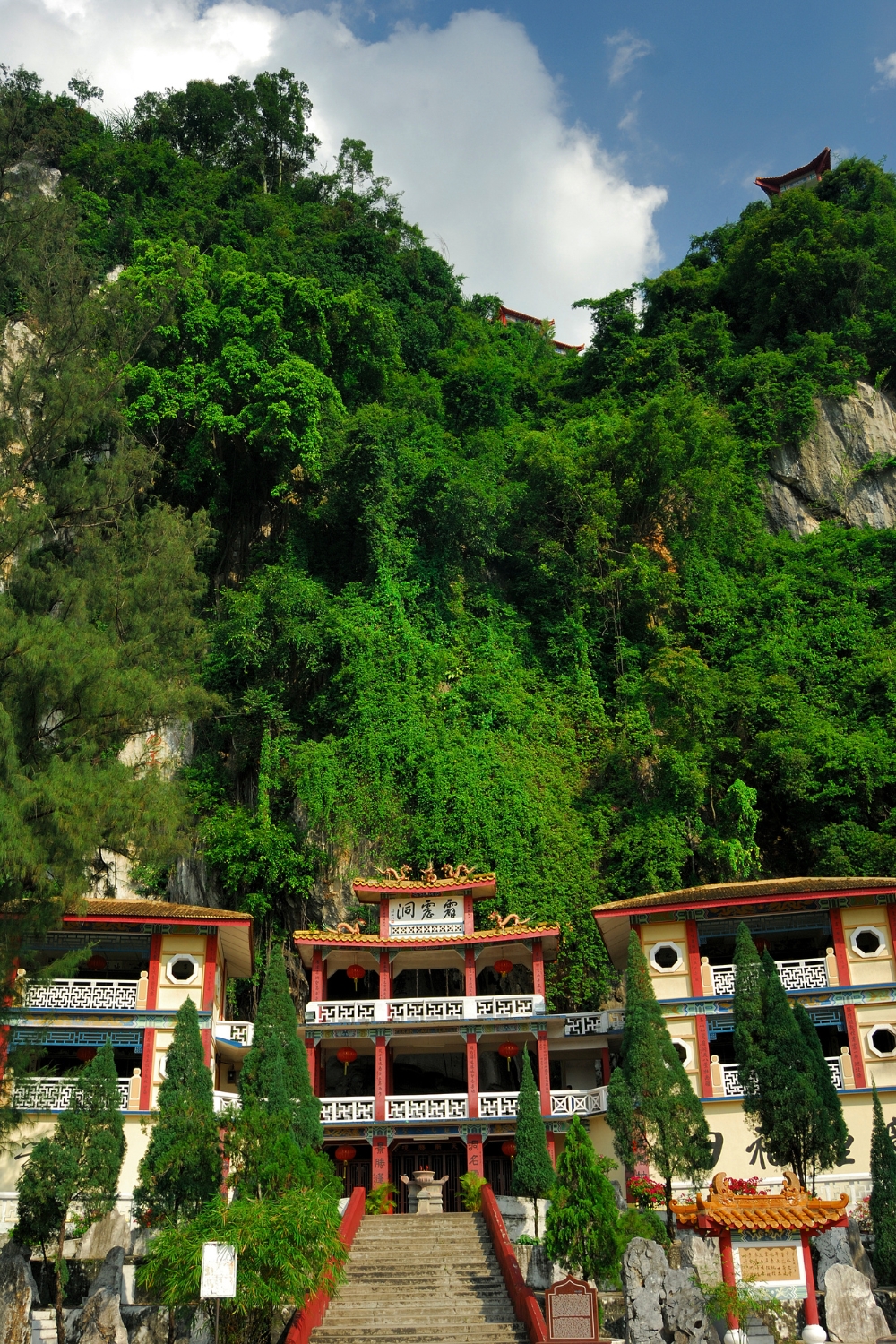
Perak Tong Cave Temple represents one of Malaysia’s most spectacular cave temples, combining natural limestone formations with Buddhist architecture and spiritual significance. This remarkable site offers visitors both religious insight and breathtaking natural beauty in a setting that has attracted pilgrims and tourists for decades.
Cave Architecture and Religious Significance
The temple complex is built within a massive limestone cave system that creates natural cathedral-like spaces enhanced by Buddhist statues, altars, and religious artwork. The main cave features towering ceilings and natural rock formations that have been incorporated into the temple design.
Over 40 Buddha statues of various sizes are positioned throughout the cave system, creating a spiritual journey as visitors move through different chambers. The largest statue, a 12.8-meter-tall Buddha, dominates the main chamber and serves as the temple’s centerpiece.
The cave’s natural acoustics enhance the spiritual atmosphere, with sounds of prayers, chanting, and meditation creating an ethereal environment. The interplay between natural rock formations and religious artwork creates a unique aesthetic that combines human creativity with natural wonder.
Climbing Experience and Panoramic Views
The temple complex includes a challenging climb of 450 steps that leads to the cave’s upper levels and eventually to a summit viewpoint. This climb rewards visitors with progressively better views of the surrounding landscape and limestone formations.
The journey upward passes through different cave chambers, each offering unique perspectives on the temple’s architecture and the natural cave system. Rest areas along the way provide opportunities to appreciate the views and catch your breath.
The summit viewpoint offers panoramic views across the Kinta Valley, Ipoh city, and the surrounding limestone hills. Early morning and late afternoon visits provide the best lighting conditions for photography and comfortable climbing temperatures.
Location: 6 km south of Ipoh
Entry fee: Free (donations welcome)
Climbing difficulty: Moderate to challenging
Best time: Early morning or late afternoon
Dress code: Respectful temple attire required
5. Royal Belum State Park – Pristine Rainforest
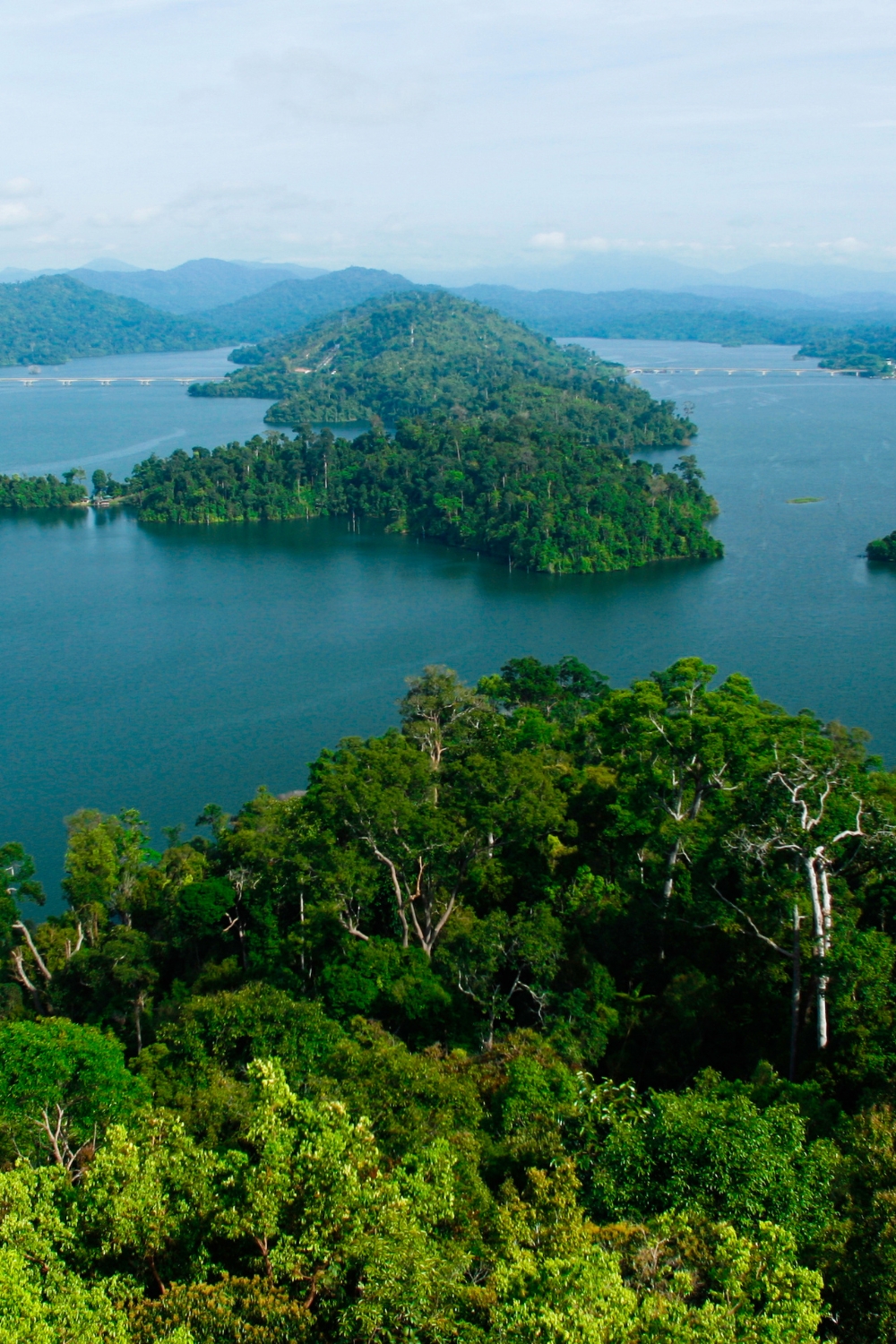
Royal Belum State Park protects one of Malaysia’s last remaining pristine rainforest ecosystems, offering visitors access to 130-million-year-old jungle that harbors incredible biodiversity. This vast wilderness area provides some of the most authentic rainforest experiences available in Peninsula Malaysia.
Ancient Rainforest and Biodiversity
The park encompasses 117,500 hectares of primary rainforest that has never been logged, making it one of the world’s oldest rainforest ecosystems. This ancient forest harbors over 3,000 species of flowering plants, 300 bird species, and numerous endangered mammals.
The forest includes 14 of the world’s most threatened mammal species, including Asian elephants, Malayan tigers, white-handed gibbons, and the rare Malayan sun bear. The park’s pristine condition provides crucial habitat for these species and serves as a living laboratory for scientific research.
Towering trees, some over 200 years old, create a multi-layered canopy that supports incredible biodiversity. The forest floor, understory, and canopy each harbor different species and ecological relationships that demonstrate the complexity of tropical rainforest ecosystems.
Adventure Activities and Eco-Tourism
The park offers various eco-tourism activities that allow visitors to experience the rainforest while supporting conservation efforts. Guided jungle treks range from easy nature walks to challenging multi-day expeditions that explore remote areas of the park.
Lake Temenggor, formed by a hydroelectric dam, provides opportunities for boat trips, fishing, and access to different areas of the park. The lake’s islands and inlets create diverse habitats and stunning scenery that combines water and forest environments.
Night walks reveal the forest’s nocturnal wildlife, including various species of insects, amphibians, and mammals that are active after dark. The sounds of the night forest create an immersive experience that highlights the ecosystem’s complexity and vitality.
Access: By boat from Pulau Banding
Activities: Jungle trekking, boat trips, wildlife watching, night walks
Accommodation: Belum Rainforest Resort, camping with permits
Best time: March to September (dry season)
Preparation: Insect repellent, appropriate clothing, guide recommended
6. Kuala Kangsar – Royal Heritage Town
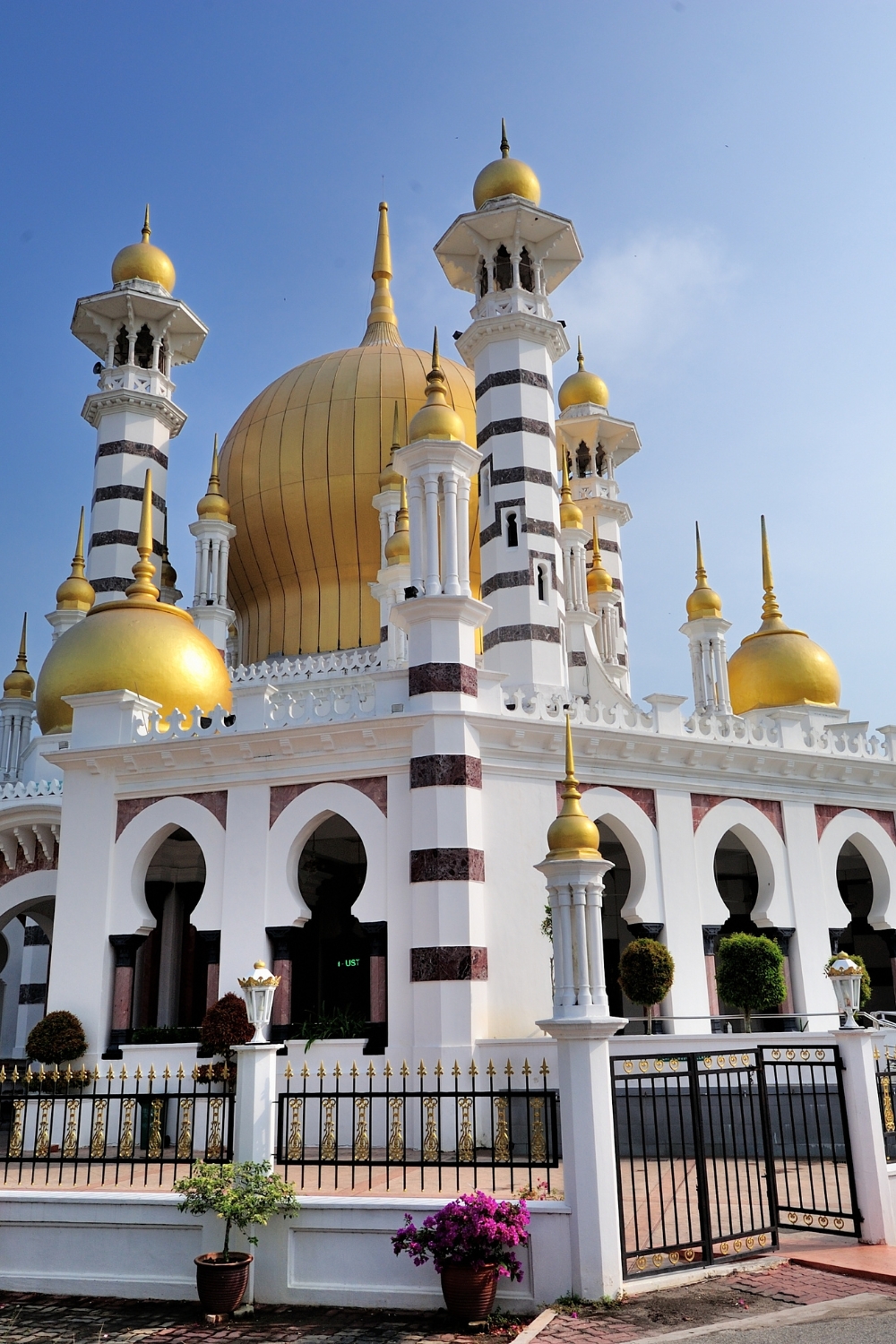
Kuala Kangsar serves as Perak’s royal capital and showcases some of Malaysia’s finest examples of traditional Malay architecture and royal heritage. This charming riverside town offers visitors insight into Malaysia’s royal traditions and architectural evolution spanning several centuries.
Royal Architecture and Palaces
The town is home to several magnificent royal palaces that demonstrate the evolution of Malay royal architecture. Istana Kenangan, built entirely without nails using traditional construction techniques, represents the pinnacle of traditional Malay wooden architecture and serves as a museum showcasing royal artifacts.
Istana Iskandariah, the current royal residence, displays more contemporary royal architecture while maintaining traditional elements. Though not open to the public, the palace’s exterior and grounds demonstrate the grandeur of modern Malaysian royal architecture.
The Ubudiah Mosque, with its distinctive golden domes and minarets, ranks among Malaysia’s most beautiful mosques. Built in 1917, this architectural masterpiece combines Indo-Saracenic and Moorish styles, creating a stunning landmark that dominates the town’s skyline.
Traditional Crafts and Cultural Heritage
Kuala Kangsar is renowned for its traditional crafts, particularly the production of labu sayong (black pottery) and tengkolok (traditional royal headgear). Visitors can observe skilled craftspeople creating these items using techniques passed down through generations.
The town’s traditional shophouses and market areas provide insight into small-town Malaysian life and offer opportunities to sample local specialties and purchase authentic handicrafts. The riverside location creates a pleasant atmosphere for exploring on foot.
The Royal Mausoleum (Makam Diraja) houses the tombs of Perak’s sultans and provides a peaceful setting for reflection on the state’s royal history. The site demonstrates traditional Islamic burial practices and architectural styles.
Key attractions: Istana Kenangan, Ubudiah Mosque, Royal Mausoleum
Activities: Cultural tours, craft workshops, architecture photography
Best for: History enthusiasts, culture lovers, architecture admirers
Duration: Half-day to full day
7. Gua Tempurung – Cave Adventure
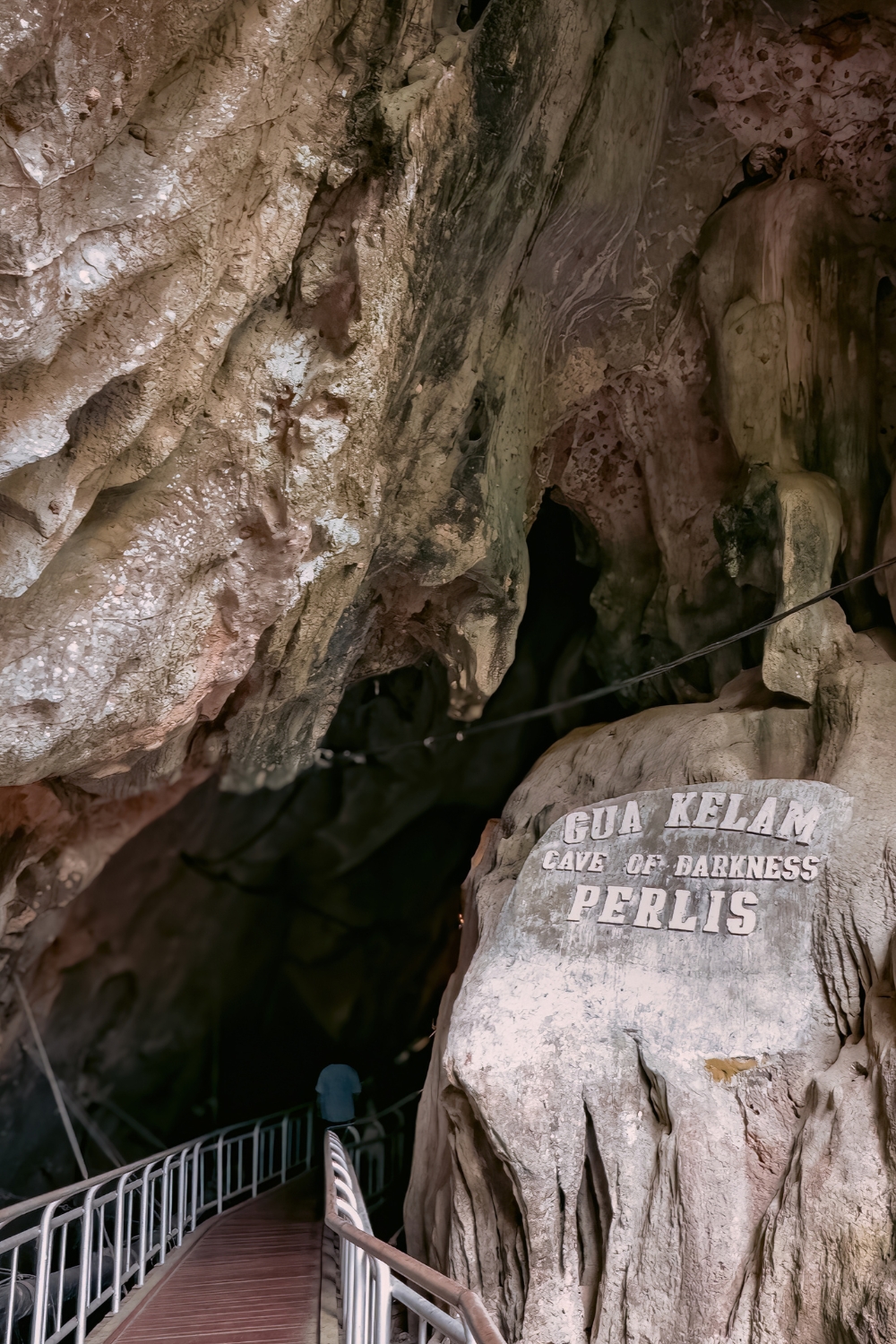
Gua Tempurung ranks as one of Peninsula Malaysia’s largest and most spectacular cave systems, offering visitors multiple levels of cave exploration from easy walks to challenging spelunking adventures. This limestone cave system provides insight into geological processes while delivering thrilling underground experiences.
Multi-Level Cave Exploration
The cave system offers four different tour routes designed for different fitness levels and adventure preferences. Tour A provides an easy 40-minute walk suitable for families and those seeking a gentle introduction to cave exploration.
More adventurous options include Tours B, C, and D, which involve increasingly challenging routes with crawling, climbing, and wading through underground streams. Tour D, the most extreme option, takes 3-4 hours and includes rappelling and swimming through underground rivers.
The cave’s massive chambers showcase spectacular limestone formations including stalactites, stalagmites, and flowstone deposits created over millions of years. The interplay of light and shadow creates dramatic effects that highlight the cave’s natural architecture.
Geological Wonder and Formation
Gua Tempurung’s formation demonstrates the power of water and time in shaping limestone landscapes. The cave system extends for over 4 kilometers, with five enormous chambers connected by passages that follow ancient underground river courses.
The cave’s geological features provide educational opportunities to learn about karst topography, limestone formation, and the role of underground water systems in landscape development. Information provided during tours explains the scientific processes involved in cave formation.
The cave maintains a constant temperature of around 21°C, providing a cool retreat from Malaysia’s tropical heat. The humidity and unique underground ecosystem support various cave-dwelling species including bats, insects, and cave fish.
Location: 24 km south of Ipoh
Tour options: 4 different routes (A, B, C, D)
Duration: 40 minutes to 4 hours depending on tour
Difficulty: Easy to extreme
Preparation: Appropriate footwear, clothes that can get wet/dirty
8. Taiping Lake Gardens – Tranquil Beauty

Taiping Lake Gardens represents Malaysia’s first public garden and remains one of the country’s most beautiful urban parks. Established in 1880 on the site of former tin mines, this 64-hectare garden showcases the transformation of industrial land into a peaceful oasis of natural beauty.
Historic Garden Design and Landscapes
The gardens feature a series of interconnected lakes created from former tin mining pools, surrounded by mature trees and landscaped areas that create a serene environment. The design incorporates both formal garden elements and natural landscapes that blend harmoniously.
Century-old rain trees provide magnificent canopy coverage and create cathedral-like spaces perfect for quiet contemplation. The gardens’ maturity gives them a timeless quality that demonstrates the long-term vision of their original planners.
Various themed areas include formal flower gardens, children’s playgrounds, and quiet corners designed for different activities and preferences. The flat terrain and well-maintained paths make the gardens accessible to visitors of all ages and mobility levels.
Wildlife and Natural Features
The lakes and surrounding vegetation provide habitat for various bird species, making the gardens a popular destination for birdwatching. Early morning visits offer the best opportunities to observe both resident and migratory birds.
The gardens’ ecosystem supports various wildlife including monitor lizards, turtles, and numerous butterfly species. The combination of water features, mature trees, and landscaped areas creates diverse microhabitats that attract different species.
Lotus ponds add seasonal color and create reflection opportunities for photography. The gardens’ photogenic qualities make them popular for both casual photography and professional photoshoots, particularly during golden hour lighting.
Opening hours: Daily 5:00 AM – 7:00 PM
Entry fee: Free
Activities: Walking, jogging, photography, birdwatching
Best times: Early morning, late afternoon
Facilities: Parking, restrooms, food stalls
9. Sam Poh Tong Cave Temple – Spiritual Heritage
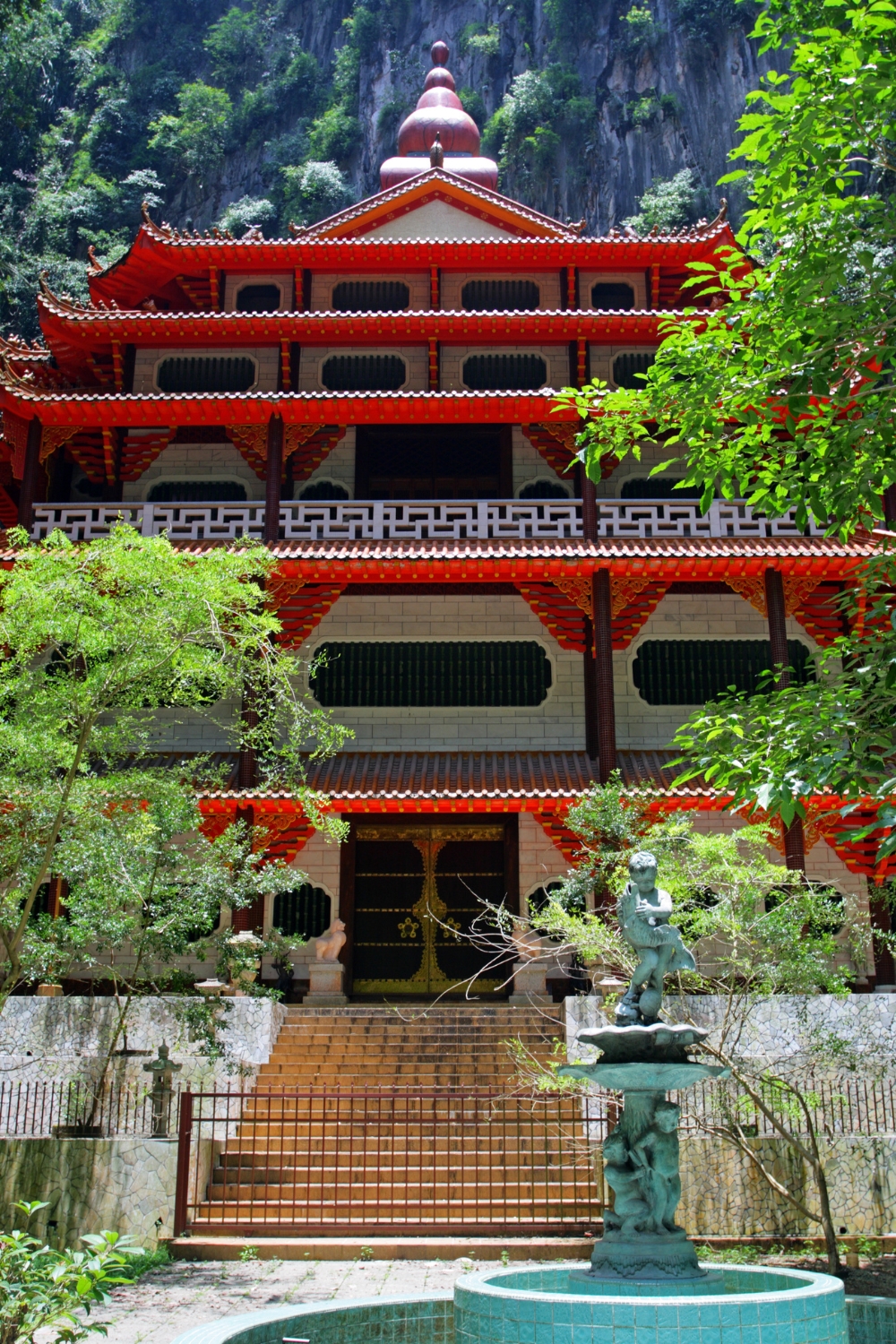
Sam Poh Tong Cave Temple combines natural limestone cave formations with Chinese Buddhist architecture and spiritual practices, creating one of Perak’s most atmospheric religious sites. This temple demonstrates the integration of natural landscapes with human spiritual expression.
Cave Temple Architecture and Religious Art
The temple complex utilizes natural cave chambers as the foundation for Buddhist worship spaces, with altars, statues, and religious artwork integrated into the limestone formations. The main cave features multiple Buddha statues and religious artifacts that create a deeply spiritual atmosphere.
The temple’s design respects the natural cave environment while providing functional spaces for worship, meditation, and religious ceremonies. The interplay between natural rock formations and human-created religious elements produces a unique aesthetic that enhances the spiritual experience.
Ornate decorations, including dragon motifs and traditional Chinese architectural elements, add color and cultural significance to the cave’s natural beauty. The temple serves as both a place of worship and a cultural center that preserves Chinese Buddhist traditions.
Meditation and Spiritual Practice
The cave’s natural acoustics and secluded atmosphere create ideal conditions for meditation and spiritual contemplation. The constant cool temperature and subdued lighting contribute to a peaceful environment that encourages reflection.
The temple regularly hosts religious ceremonies, festivals, and meditation sessions that welcome visitors to observe or participate respectfully. These activities provide insight into Chinese Buddhist practices and community religious life.
The temple’s turtle pond and surrounding gardens extend the spiritual experience beyond the cave itself. The combination of water features, landscaping, and natural cave formations creates a comprehensive environment for spiritual practice.
Location: 5 km south of Ipoh
Entry fee: Free (donations welcome)
Activities: Temple visits, meditation, cultural observation
Dress code: Respectful attire required
Best time: Morning for peaceful atmosphere
10. Bukit Larut (Maxwell Hill) – Cool Mountain Retreat

Bukit Larut, formerly known as Maxwell Hill, stands as Malaysia’s oldest hill station and offers a refreshing escape from the tropical heat. This mountain retreat provides cooler temperatures, beautiful gardens, and panoramic views while maintaining a vintage charm that reflects its colonial heritage.
Colonial Hill Station Heritage
Established in 1884, Bukit Larut served as a retreat for British colonial administrators seeking relief from the lowland heat. The hill station retains much of its colonial character through vintage bungalows, gardens, and infrastructure that transport visitors back to the colonial era.
The journey to the summit involves a scenic drive along winding mountain roads that offer progressively better views of the surrounding landscape. The road itself is part of the attraction, with hairpin bends and elevation changes that create excitement and anticipation.
Historic bungalows and rest houses scattered throughout the hill station provide accommodation options that maintain colonial-era charm while offering modern comfort. These heritage buildings add to the authentic hill station atmosphere.
Natural Beauty and Outdoor Activities
The hill station’s elevation creates a significantly cooler climate that supports different vegetation from the lowlands. Temperate plants, flowers, and trees create gardens and natural areas that contrast beautifully with the tropical environment below.
Multiple hiking trails of varying difficulty levels allow visitors to explore the mountain’s natural beauty and achieve different viewpoints. The trails pass through tropical montane forest that harbors unique plant and animal species adapted to the cooler mountain environment.
The summit provides spectacular panoramic views across the coastal plains, Taiping town, and the Strait of Malacca. Sunrise and sunset viewings from the summit offer some of the most beautiful vistas in Perak, particularly when morning mist creates atmospheric effects.
Elevation: 1,250 meters above sea level
Temperature: 5-10°C cooler than lowlands
Activities: Hiking, nature walks, photography, relaxation
Accommodation: Colonial-era bungalows and guesthouses
Best time: Clear weather for optimal views
Planning Your Perak Adventure
Getting Around Perak
Perak’s attractions are well-connected by major highways and roads, making car rental the most flexible option for exploring multiple destinations. The North-South Expressway provides excellent access to major towns, while state roads connect to more remote attractions.
Public transportation includes buses connecting major towns and some tourist destinations, though schedules may be limited for certain attractions. Grab and other ride-sharing services are available in larger towns like Ipoh and Taiping.
Many attractions are within day-trip distance of Ipoh, making it an excellent base for exploration. Alternatively, staying in different areas allows for more immersive experiences and reduced travel time to specific attractions.
Best Time to Visit
Dry Season (May-September): Ideal for outdoor activities, cave exploration, and mountain visits. Lower rainfall makes hiking and beach activities more comfortable, though temperatures can be higher.
Wet Season (October-April): Excellent for experiencing lush landscapes and waterfalls at their most impressive. Some outdoor activities may be limited by weather, but cultural and indoor attractions remain accessible.
Year-round Considerations: Cave temperatures remain constant regardless of season, making them excellent options during hot weather. Hill stations provide cooler temperatures throughout the year.
Cultural Sensitivity and Local Etiquette
Perak’s diverse population includes Malay, Chinese, Indian, and indigenous communities, each with their own cultural practices and traditions. Respect for all cultures enhances the travel experience and interactions with locals.
When visiting religious sites, dress modestly and follow specific guidelines for each location. Remove shoes before entering temples and mosques, and observe quietly during religious activities.
The state’s multicultural character is reflected in its cuisine, festivals, and daily life. Showing interest in different cultural traditions and being open to new experiences enriches the travel experience significantly.
Conclusion
Perak offers an extraordinary diversity of experiences that showcase Malaysia’s natural beauty, cultural heritage, and historical significance. From the artistic streets of Ipoh to the pristine rainforests of Royal Belum, from royal palaces to tropical islands, the state provides something special for every type of traveler.
What makes Perak particularly appealing is its accessibility and variety. Within a relatively small geographic area, visitors can experience caves and mountains, beaches and forests, modern cities and traditional villages, spiritual sites and adventure activities. This diversity allows for comprehensive exploration or focused experiences based on personal interests.
The state’s rich history creates layers of discovery that reward deeper exploration. Colonial heritage, royal traditions, tin mining legacy, and multicultural influences combine to create a destination that reveals new facets with each visit.
These ten must-visit places represent the highlights of what Perak offers, but they’re just the beginning of the state’s attractions. The genuine warmth of Perak’s people, the exceptional food culture, and the state’s strategic location make it an ideal destination for both quick getaways and extended exploration.
Whether you’re interested in history and culture, natural beauty and outdoor adventure, spiritual experiences, or simply relaxation and good food, Perak delivers experiences that will create lasting memories. The state’s combination of accessibility, diversity, and authenticity makes it a perfect introduction to Malaysia’s many charms.
Start planning your Perak adventure today, and prepare to discover why this remarkable state continues to captivate visitors with its unique blend of natural wonders, cultural treasures, and warm hospitality. The Land of Grace awaits with experiences that will exceed your expectations and leave you planning your next visit before you’ve even left.

